American history at Tule Lake, Manzanar and the César E. Chávez National Monument
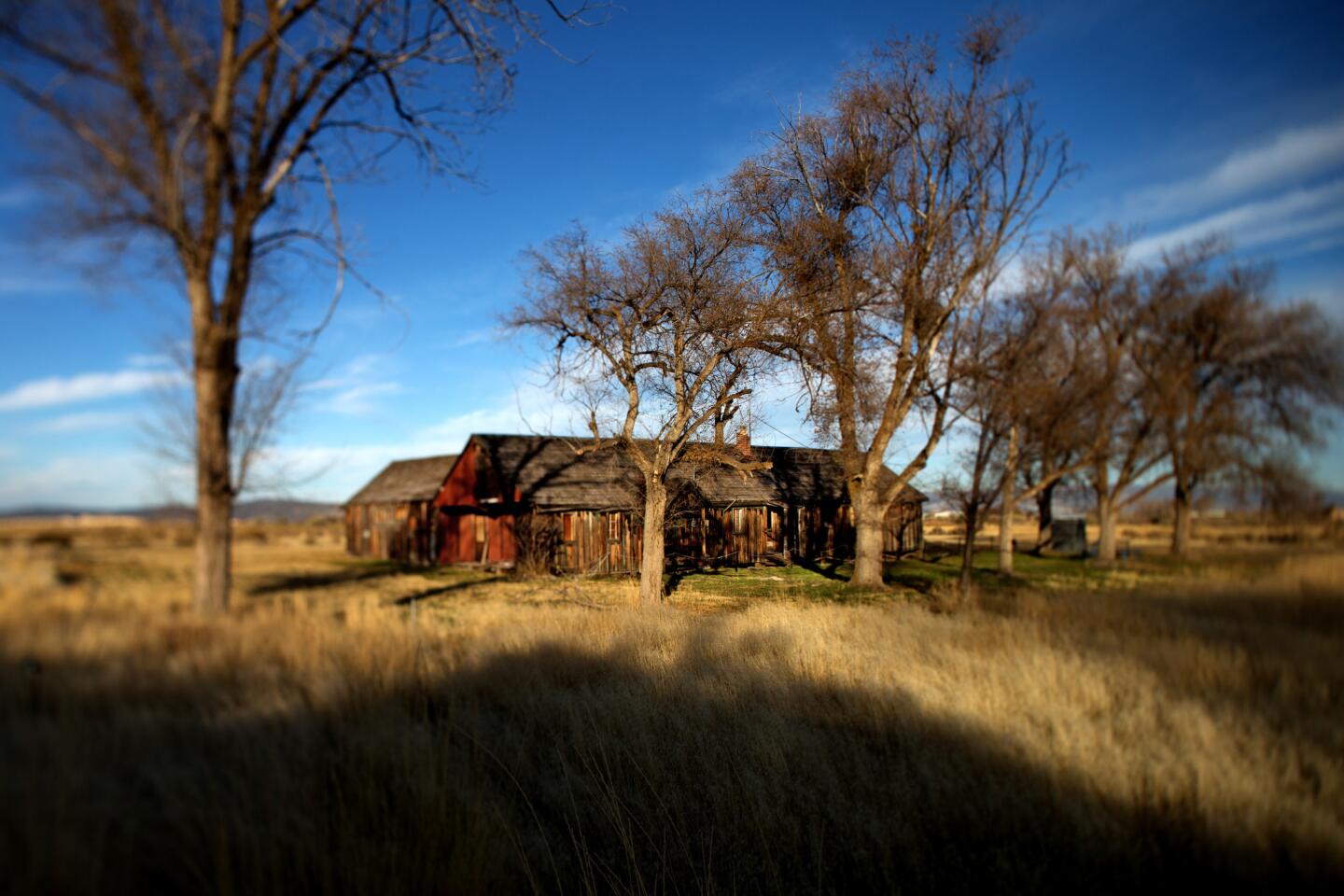
The high security jail at the Tule Lake Segregation Center, the largest and most controversial of the sites where Japanese Americans were interned during World War II. (Gary Coronado / Los Angeles Times)
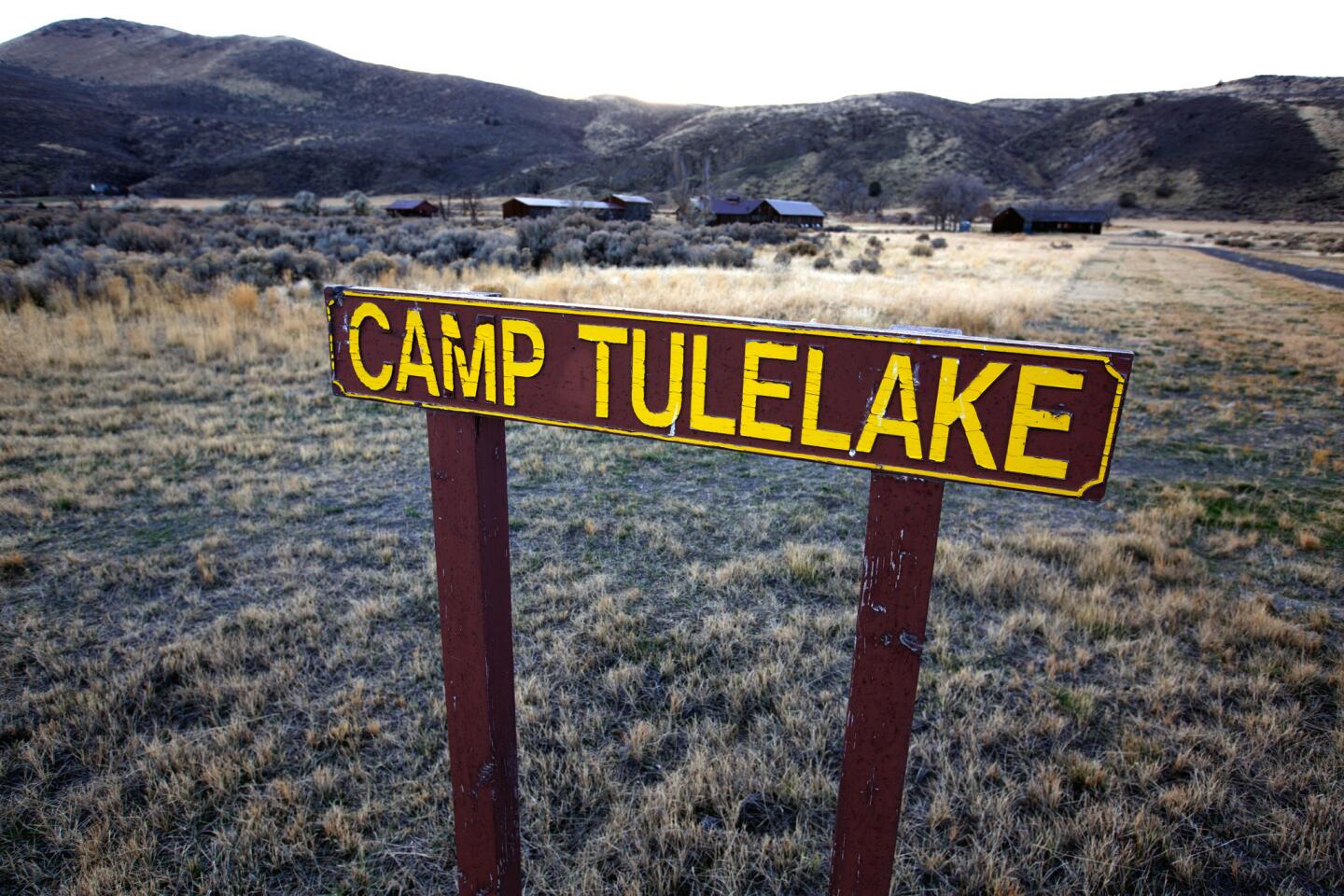
The entrance to Camp Tulelake.
(Gary Coronado / Los Angeles Times)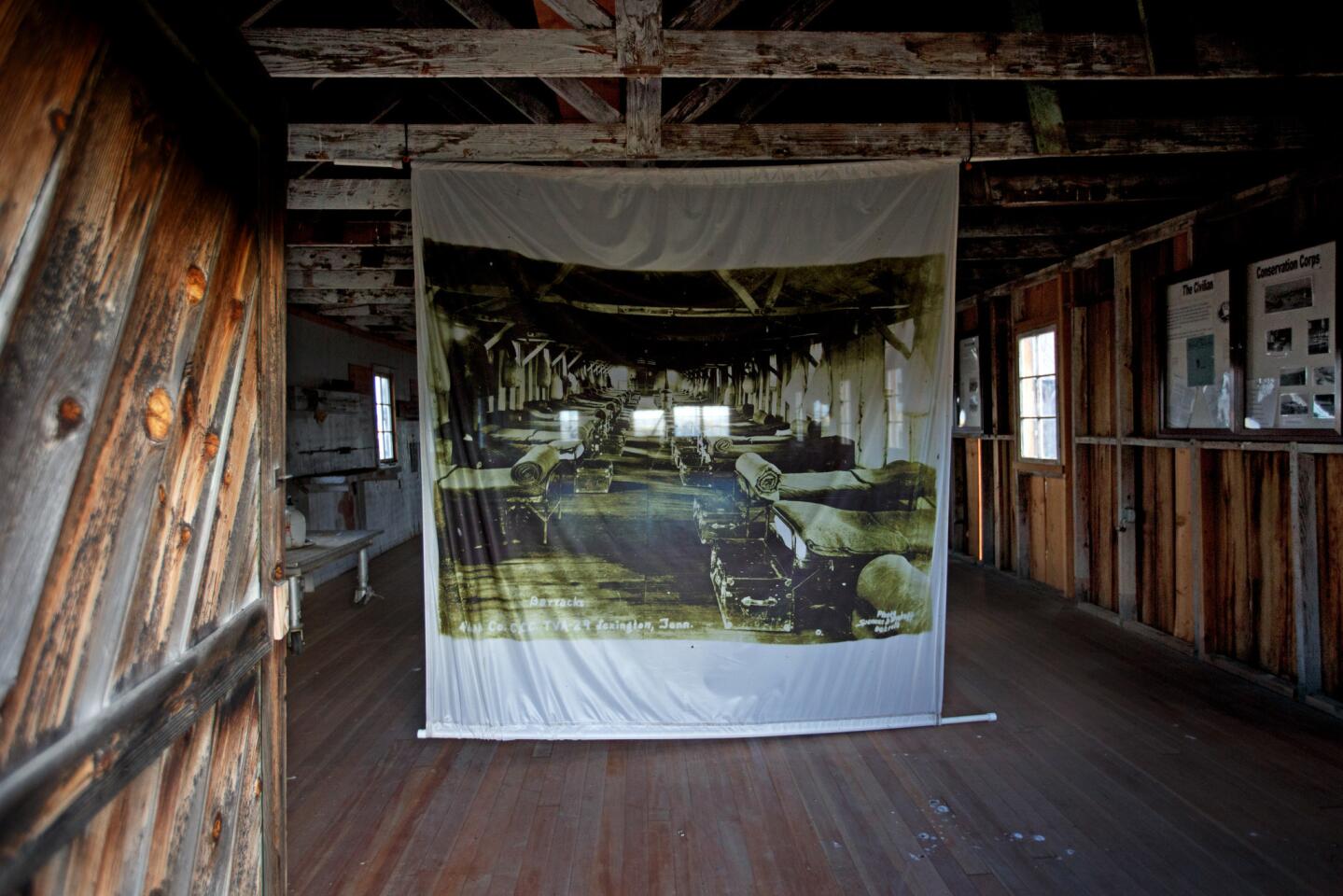
A photo depicting what the inside of a barracks looked like when used to house Japanese American internees, at Camp Tulelake.
(Gary Coronado / Los Angeles Times)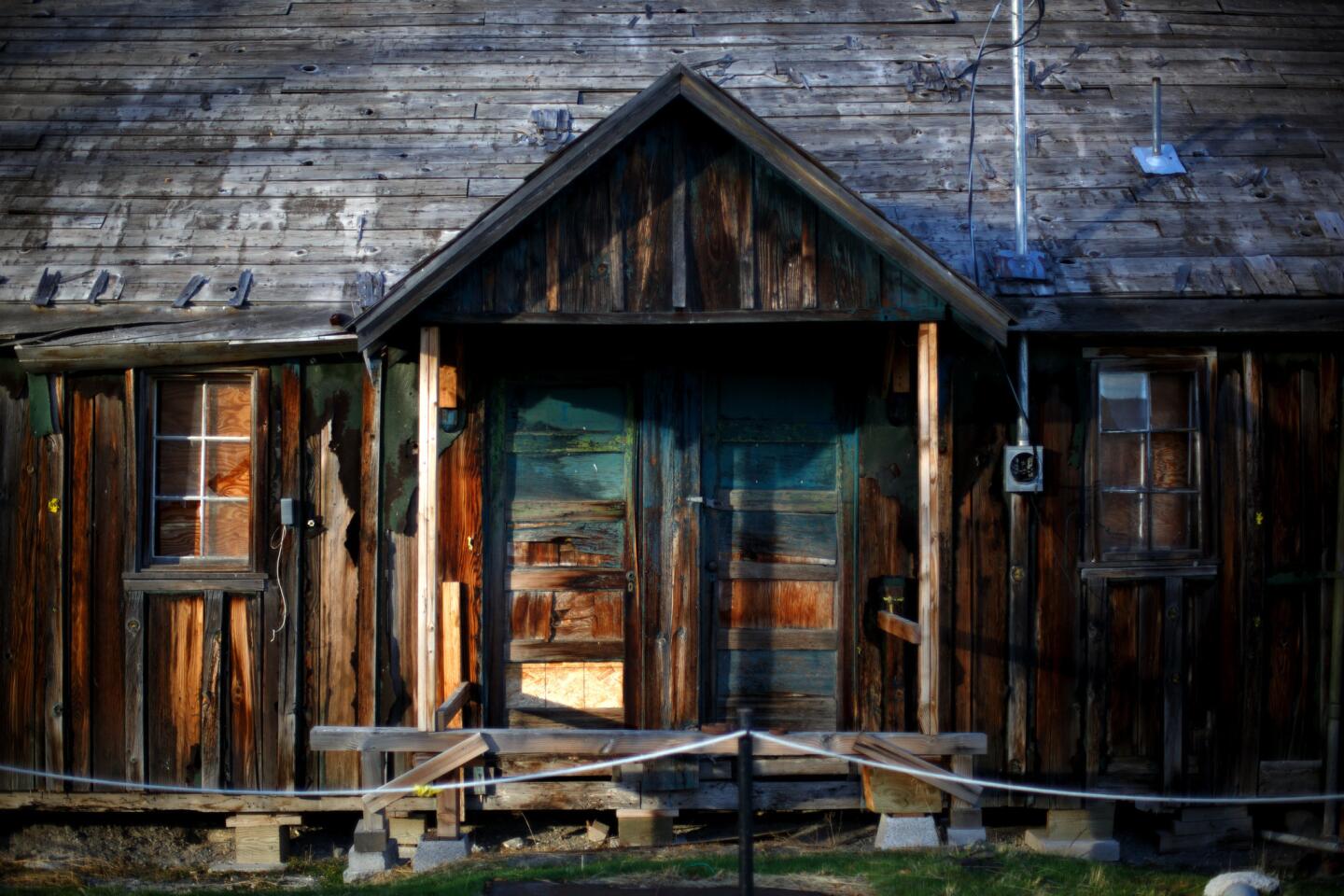
The kitchen/mess hall building at Camp Tulelake.
(Gary Coronado / Los Angeles Times)Advertisement
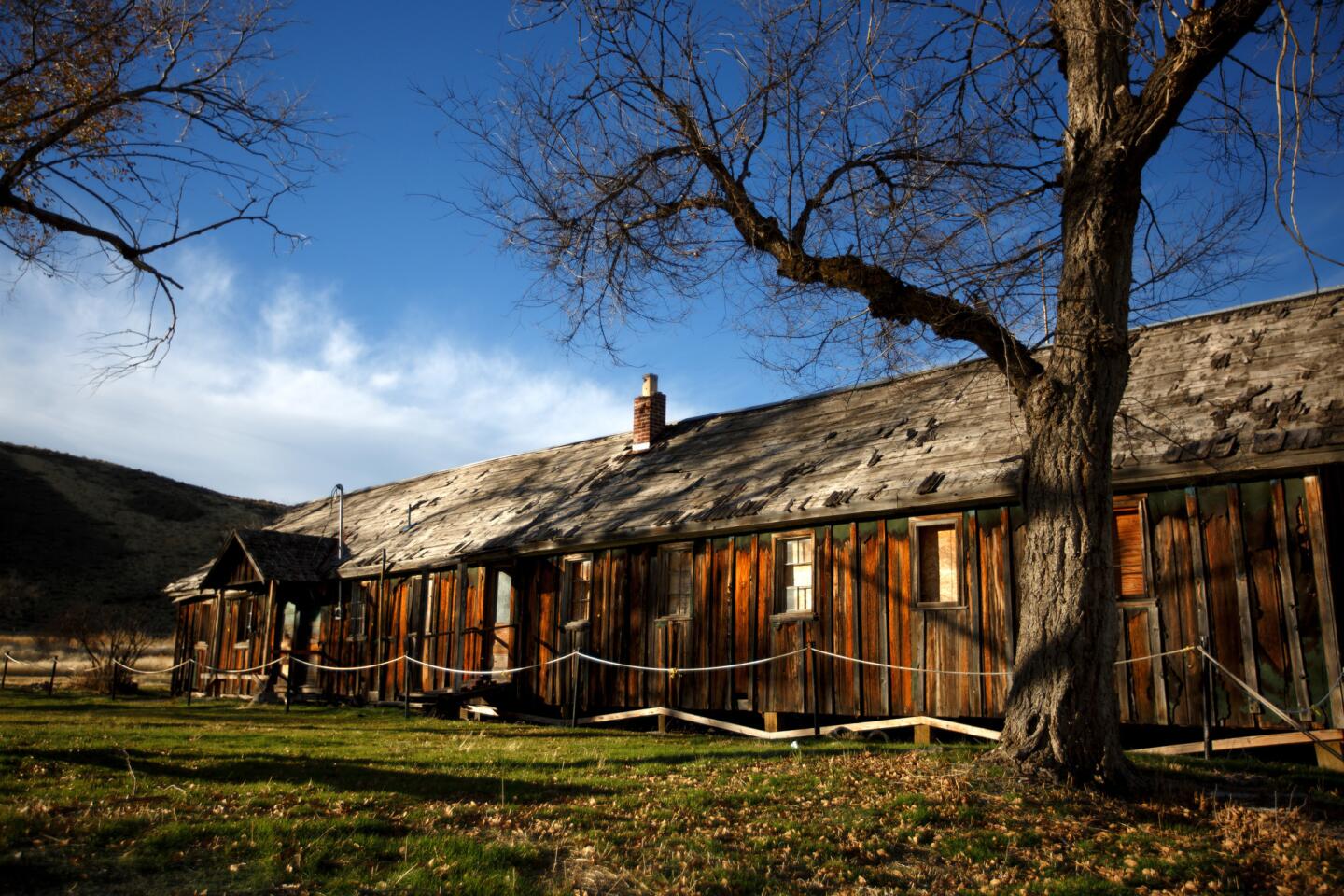
The kitchen/mess hall building at Camp Tulelake.
(Gary Coronado / Los Angeles Times)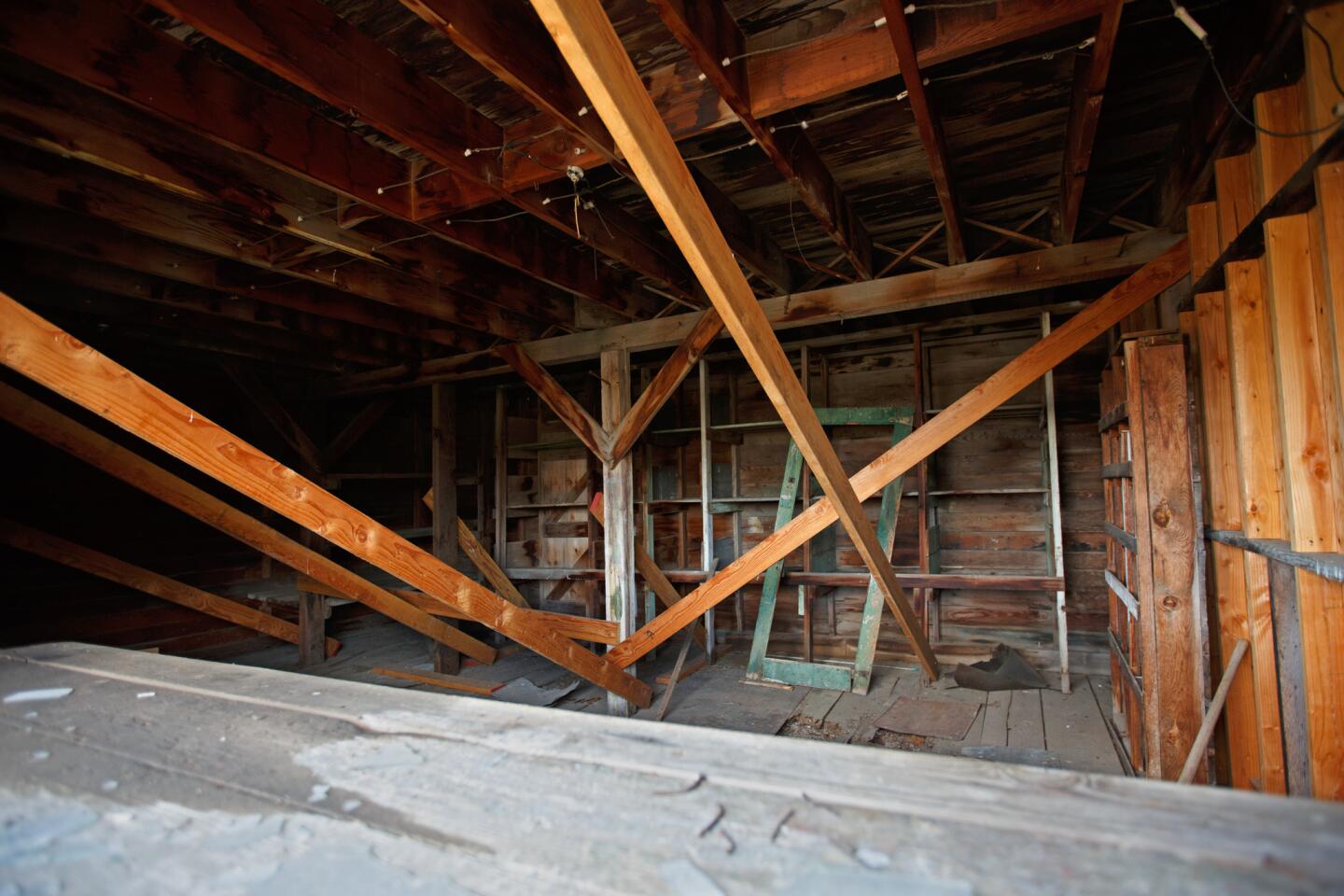
The inside of a barracks at Camp Tulelake.
(Gary Coronado / Los Angeles Times)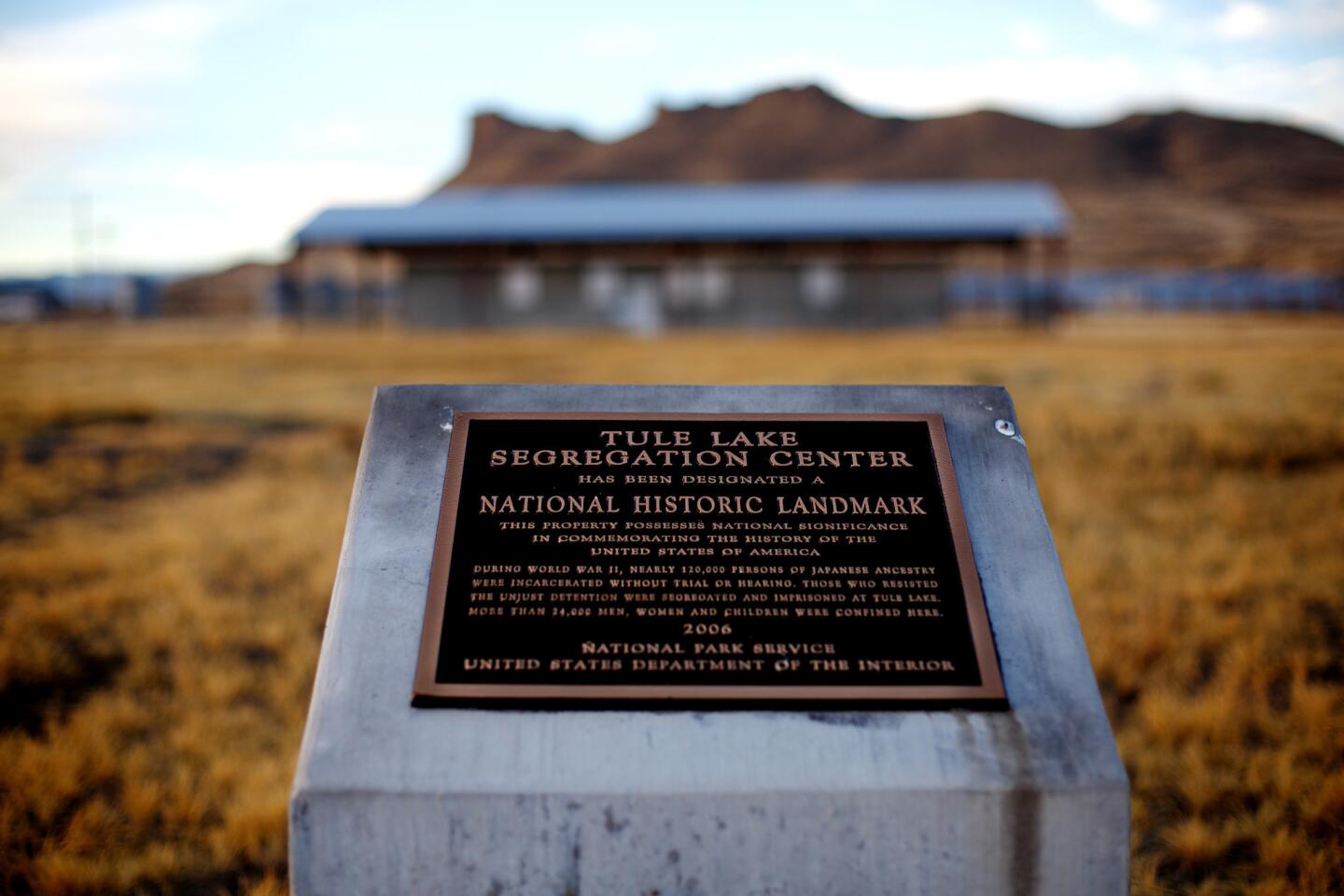
A monument, shown with the jail in the background, at the Tule Lake Segregation Center.
(Gary Coronado / Los Angeles Times)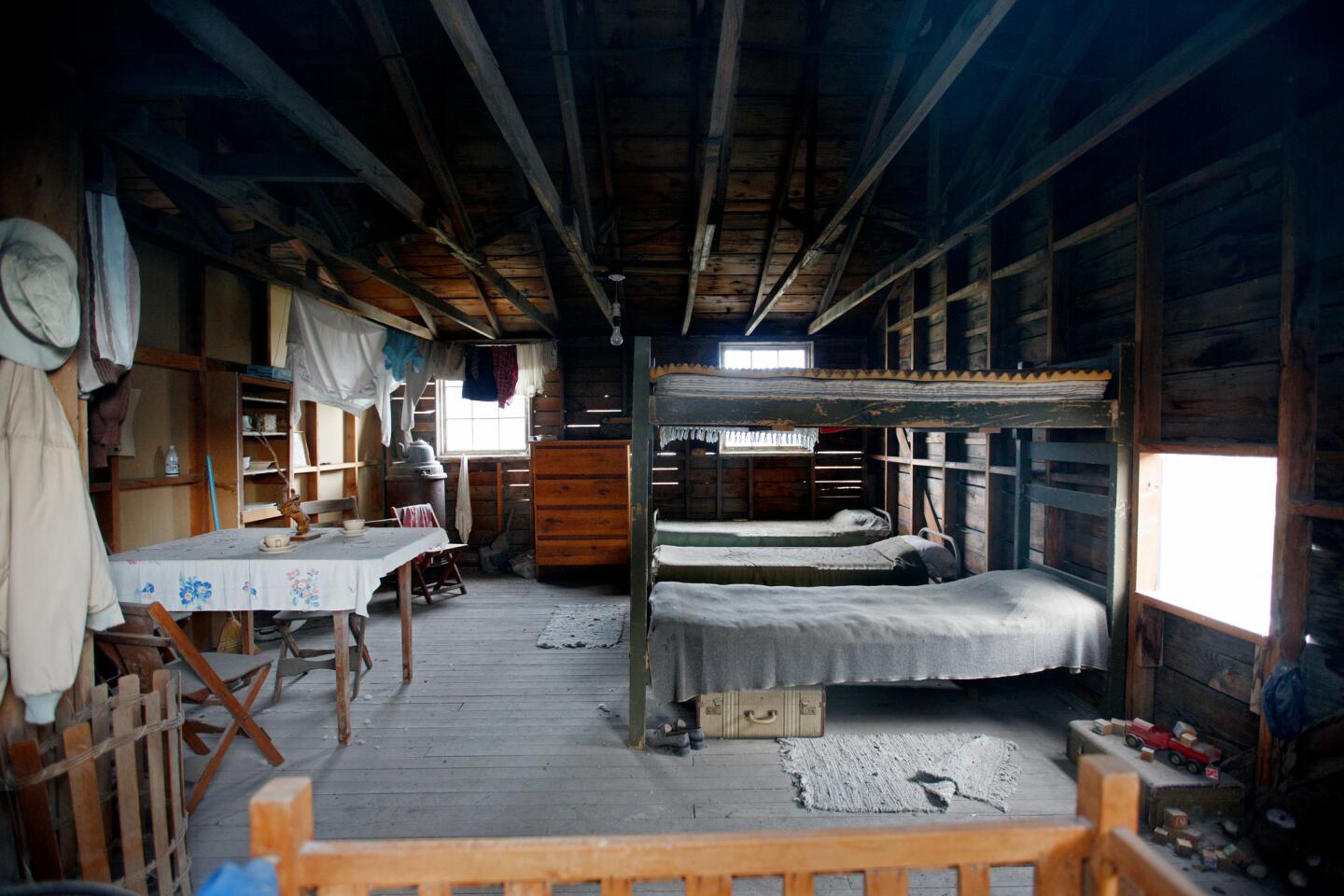
A barracks is set up as the living quarters for a family of four at the Tule Lake internment camp.
(Gary Coronado / Los Angeles Times)Advertisement
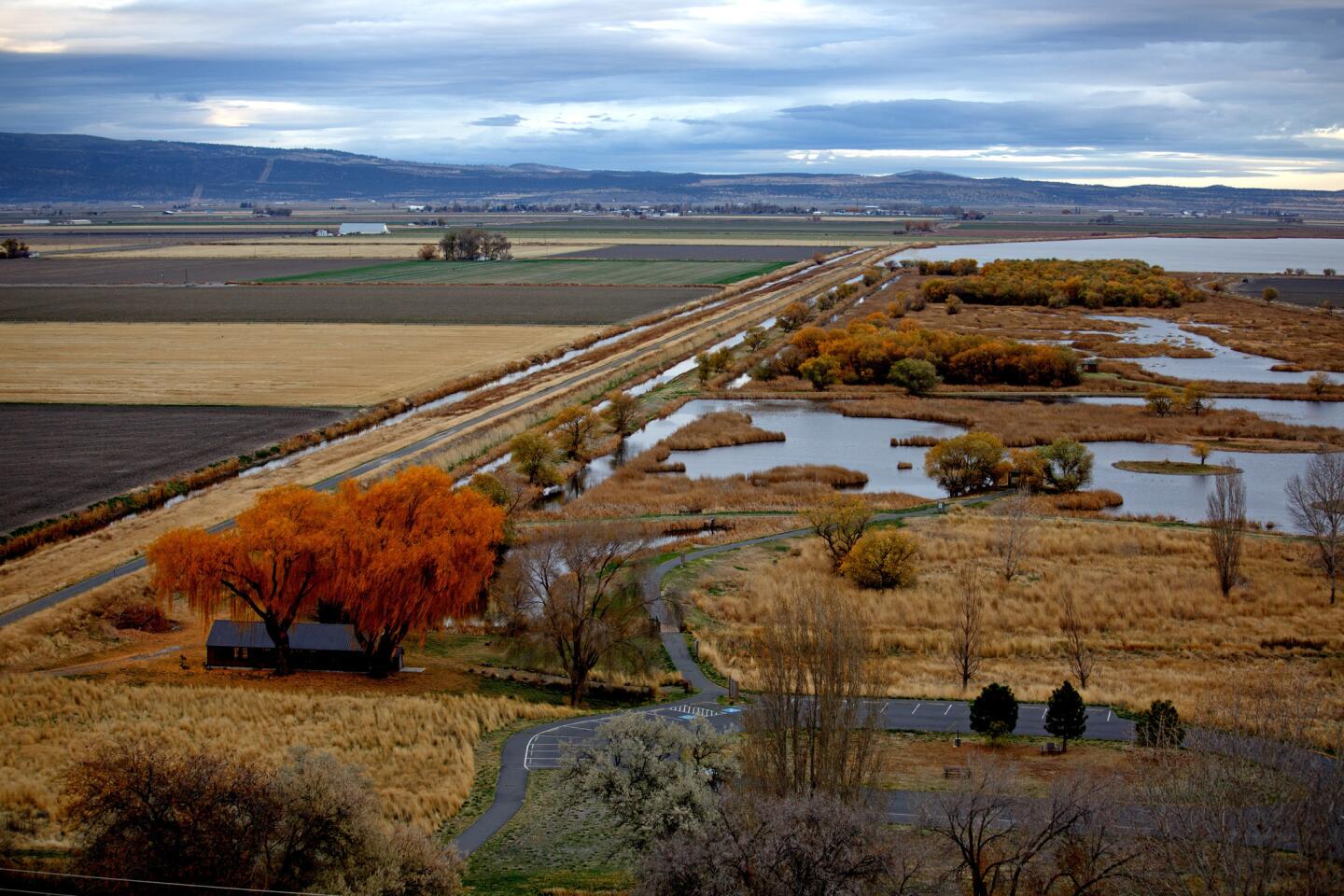
Tule Lake and the Klamath Basin are seen from a lookout tower built by the Civilian Conservation Corps in the 1930s at the top of Sheepy Ridge Trail in the Klamath Basin National Wildlife Refuge, in Tulelake, Calif.
(Gary Coronado / Los Angeles Times)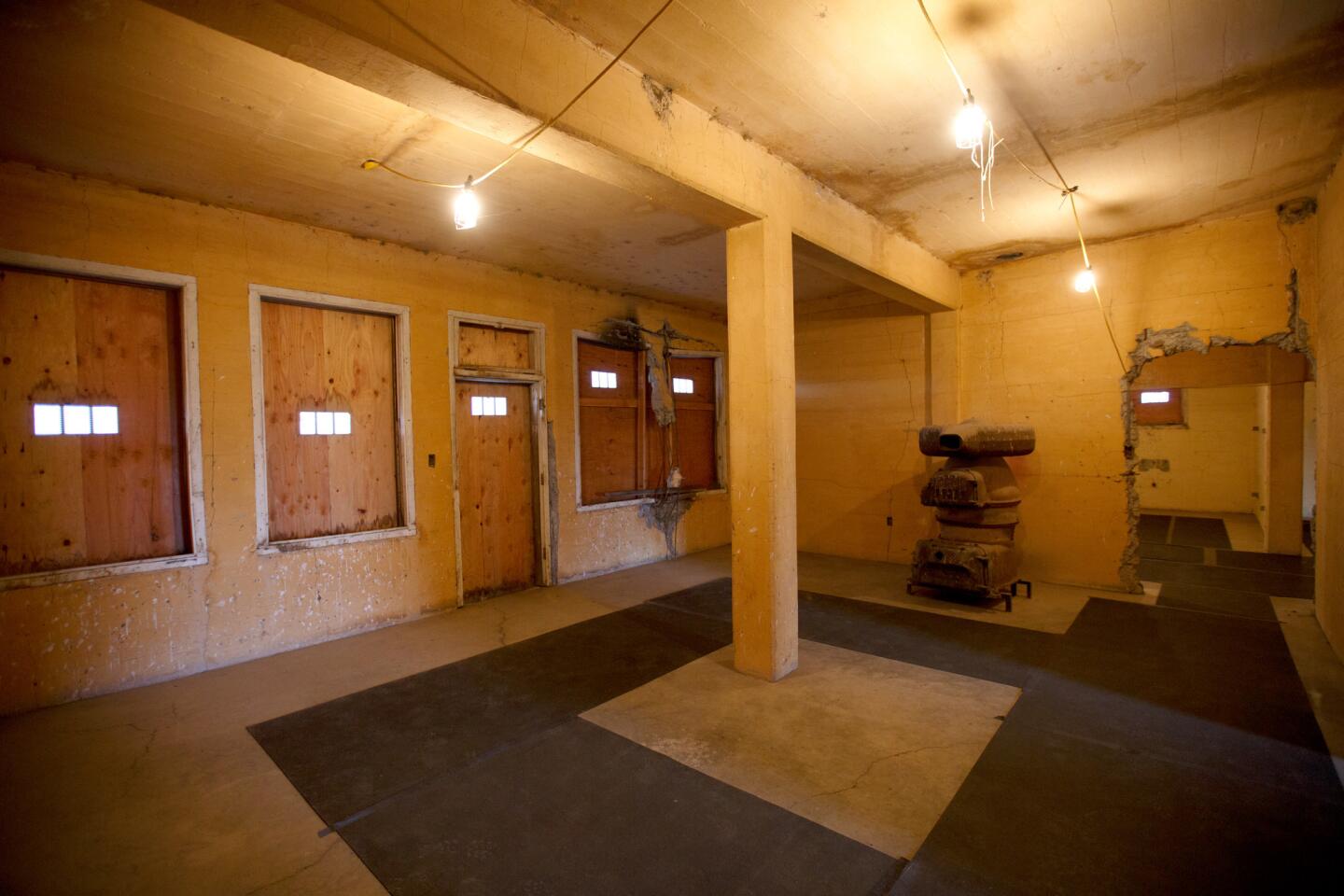
The interior of the high security jail, at the Tule Lake Segregation Center.
(Gary Coronado / Los Angeles Times)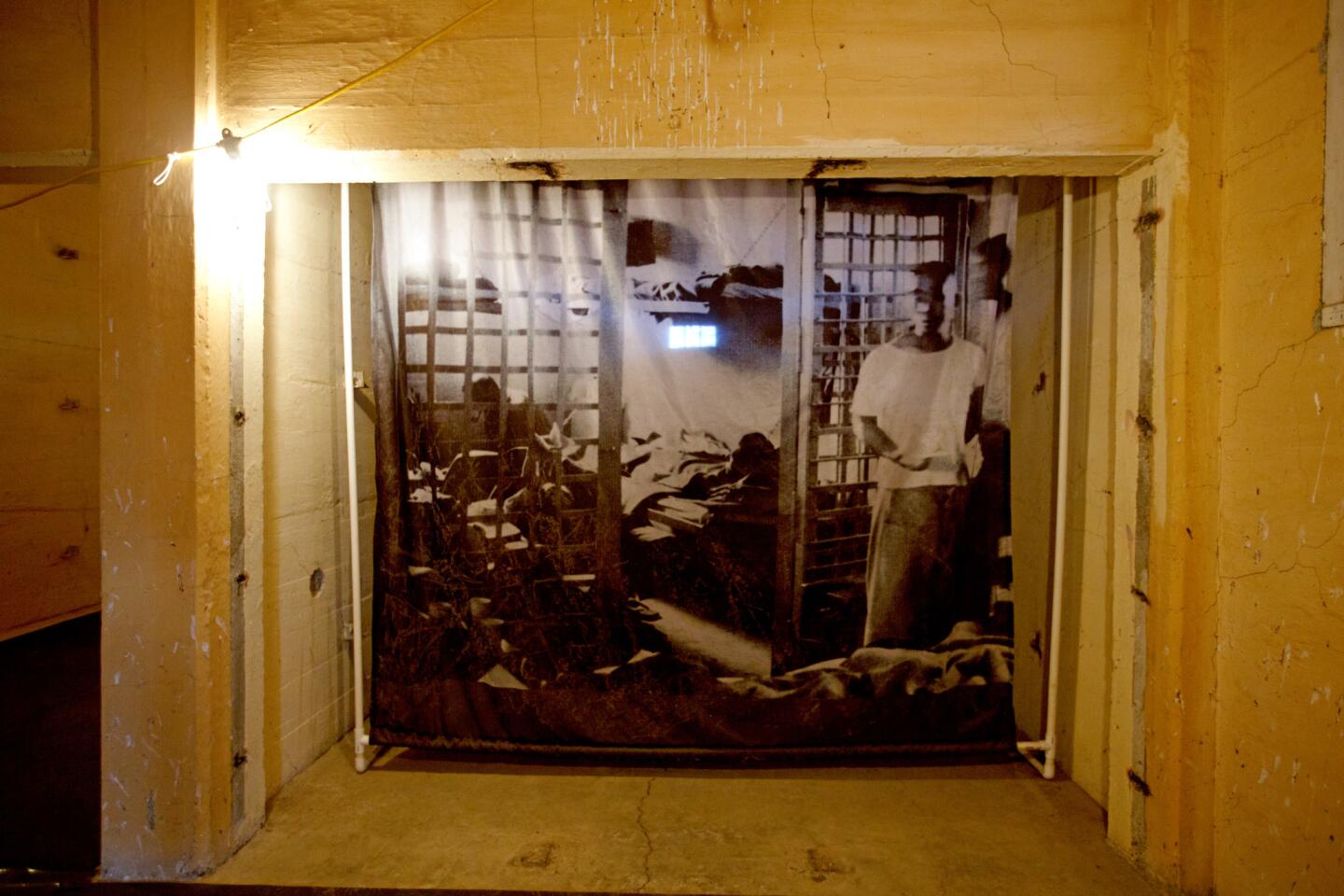
A photograph shows the interior of a holding cell at the high security jail at the Tule Lake Segregation Center.
(Gary Coronado / Los Angeles Times)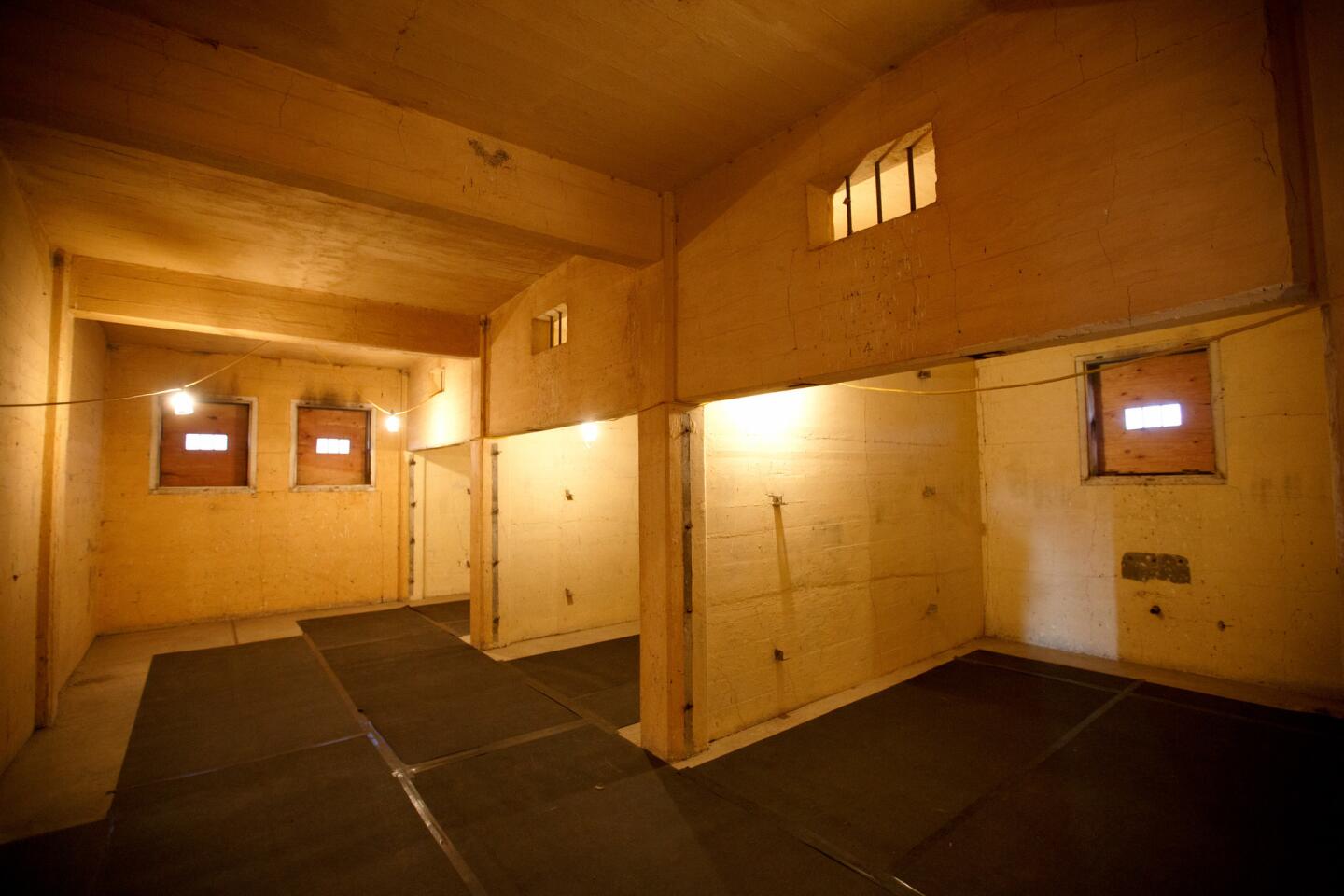
The interior of the high security jail at the Tule Lake Segregation Center.
(Gary Coronado / Los Angeles Times)Advertisement
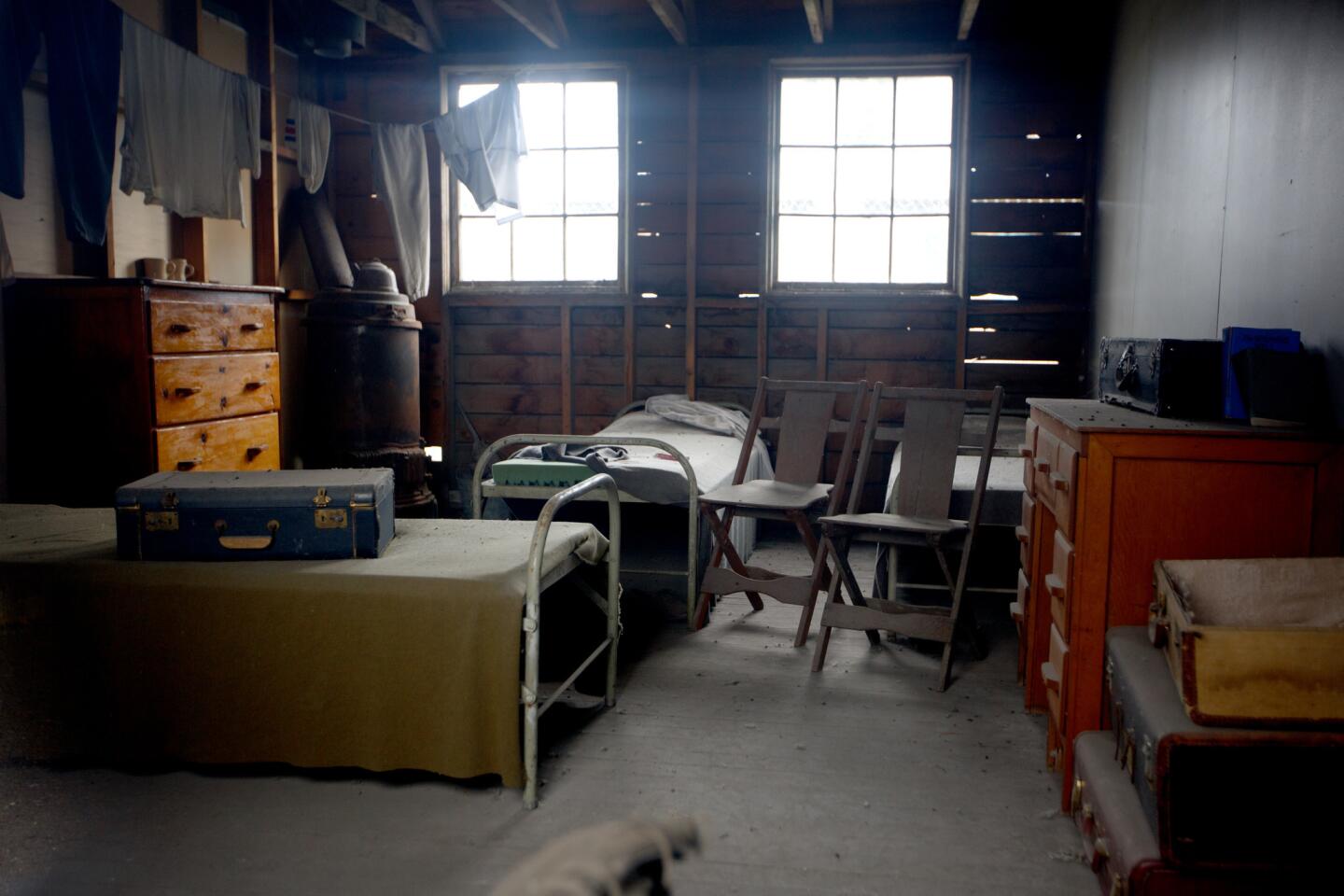
The living quarters for four bachelors are set up in a barracks from the Tule Lake internment camp.
(Gary Coronado / Los Angeles Times)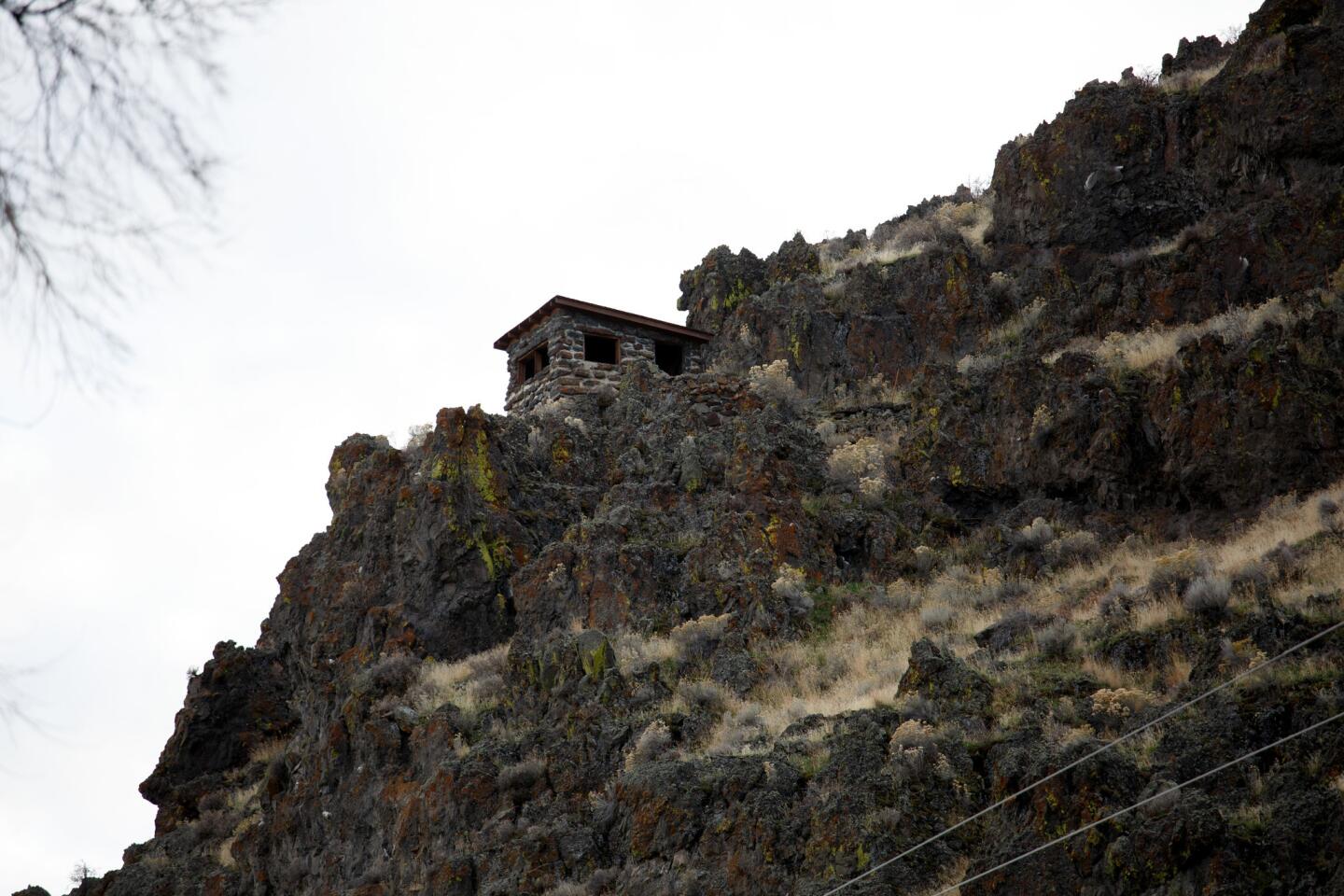
The Sheepy Ridge Lookout Tower, built by the Civilian Conservation Corps in the 1930s, perches at the top of Sheepy Ridge Trail in the Klamath Basin National Wildlife Refuge, Tulelake, Calif.
(Gary Coronado / Los Angeles Times)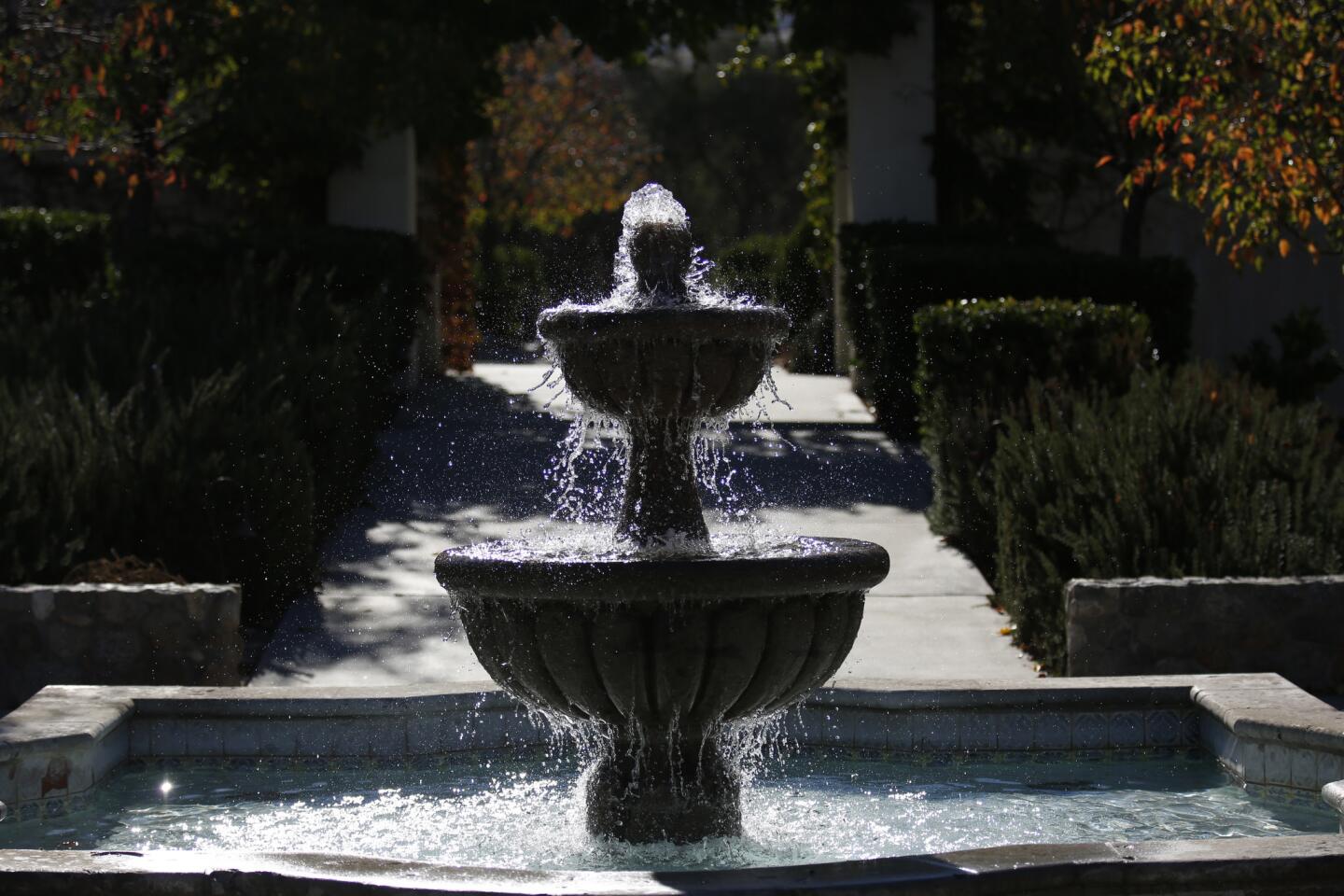
A fountain bubbles at the César E. Chávez National Monument in Keene, Calif. The monument is part of a property known as Nuestra Señora Reina de la Paz, the home and workplace of the Chávez family and farmworker-movement organizations.
(Francine Orr / Los Angeles Times)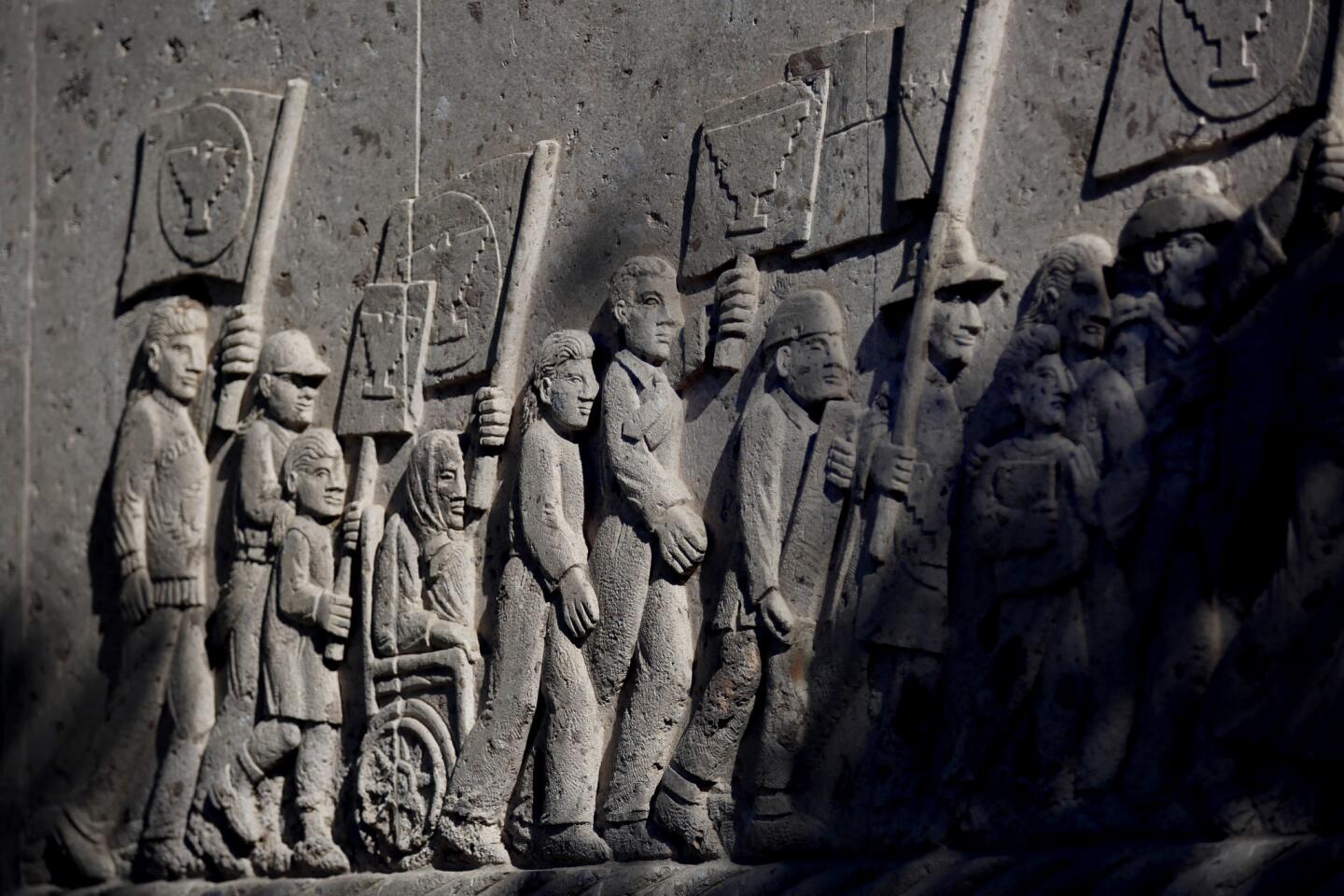
The fountain, detailed, is located near the gravesite of César Chávez and his wife, Helen, at the César E. Chávez National Monument.
(Francine Orr / Los Angeles Times)Advertisement
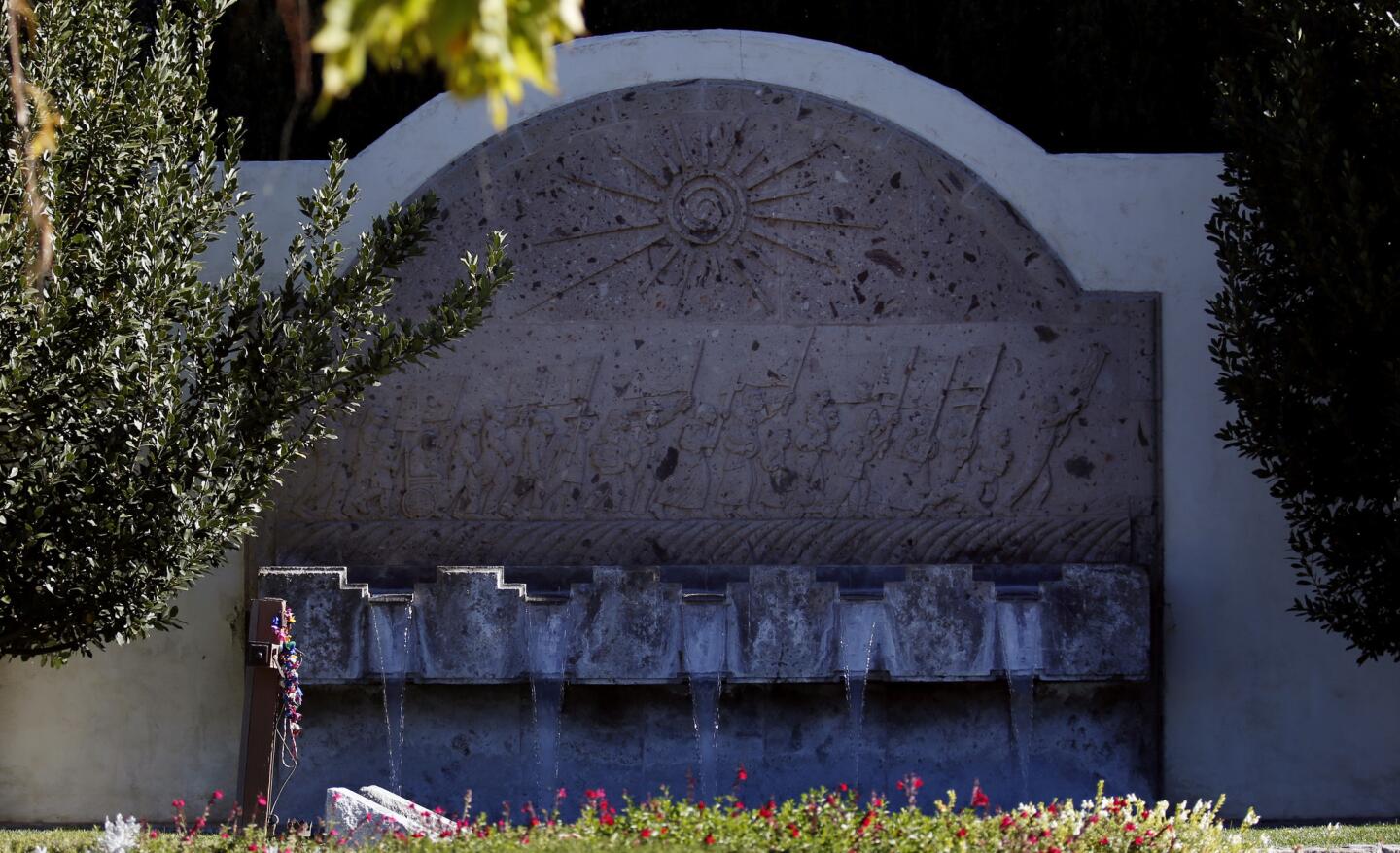
The fountain in the Memorial Garden is located near the gravesite of César Chávez and his wife, Helen.
(Francine Orr / Los Angeles Times)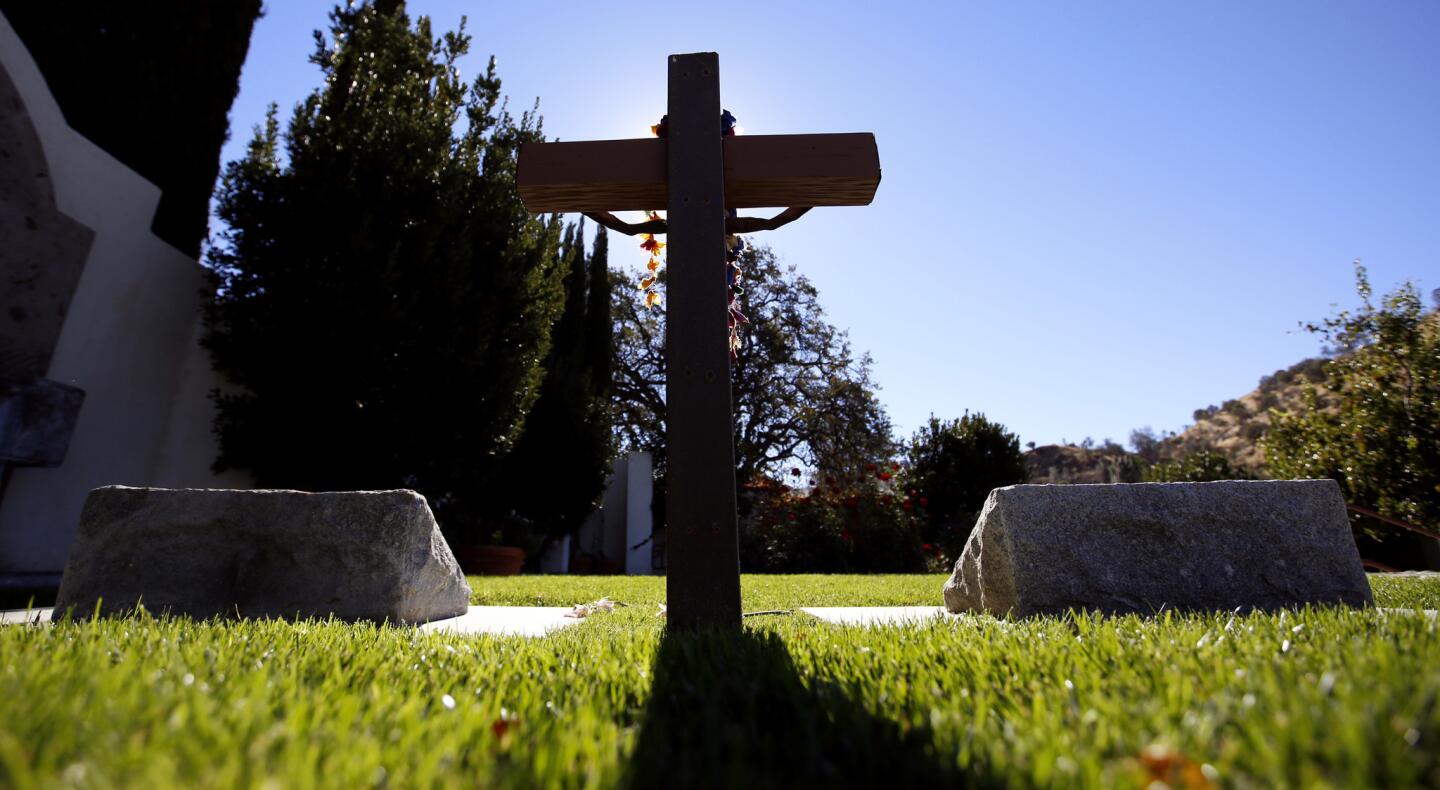
A cross between the graves of César Chávez, left, and his wife, Helen.
(Francine Orr / Los Angeles Times)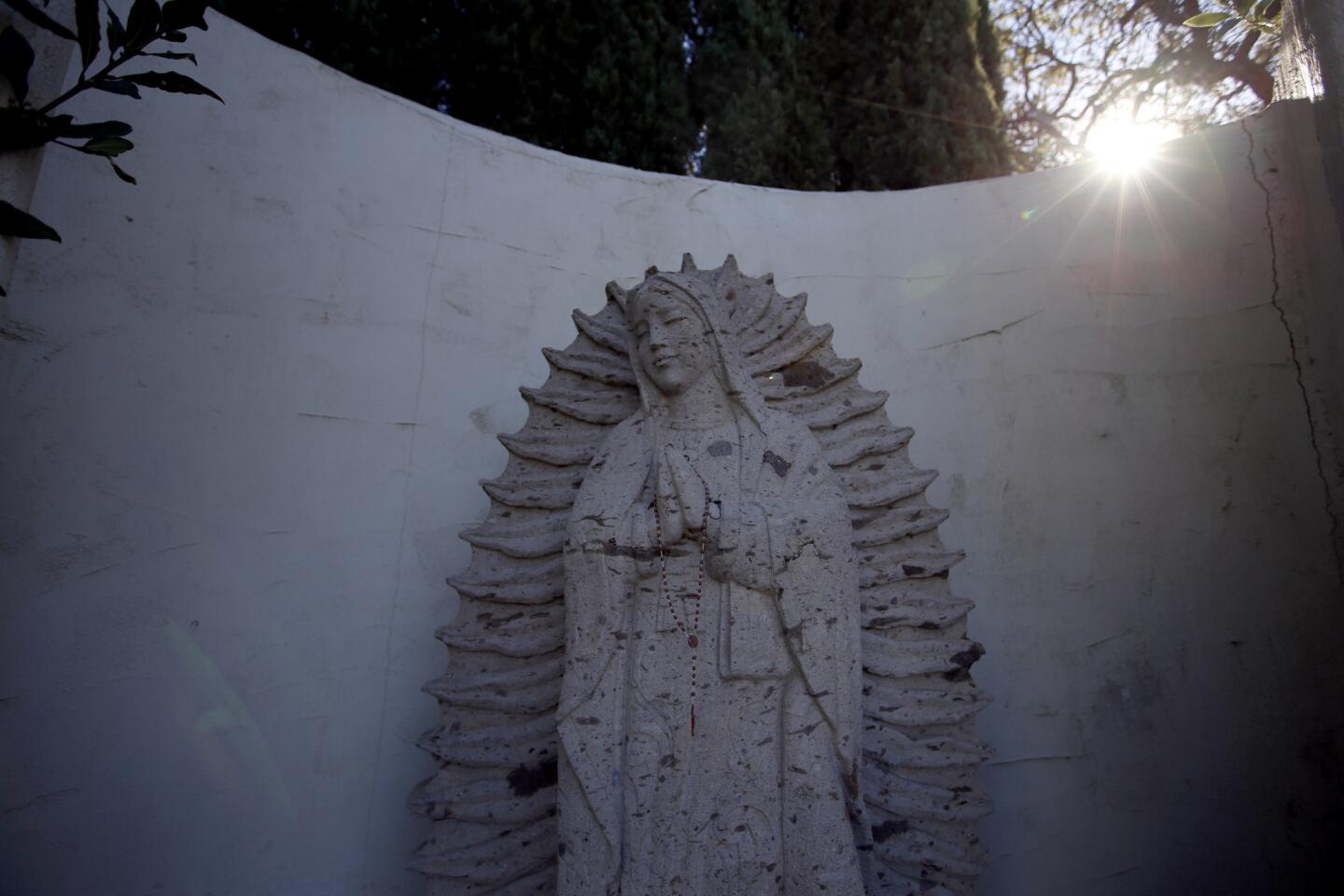
A statue of Our Lady of Guadalupe near the graves of César Chávez and his wife, Helen.
(Francine Orr / Los Angeles Times)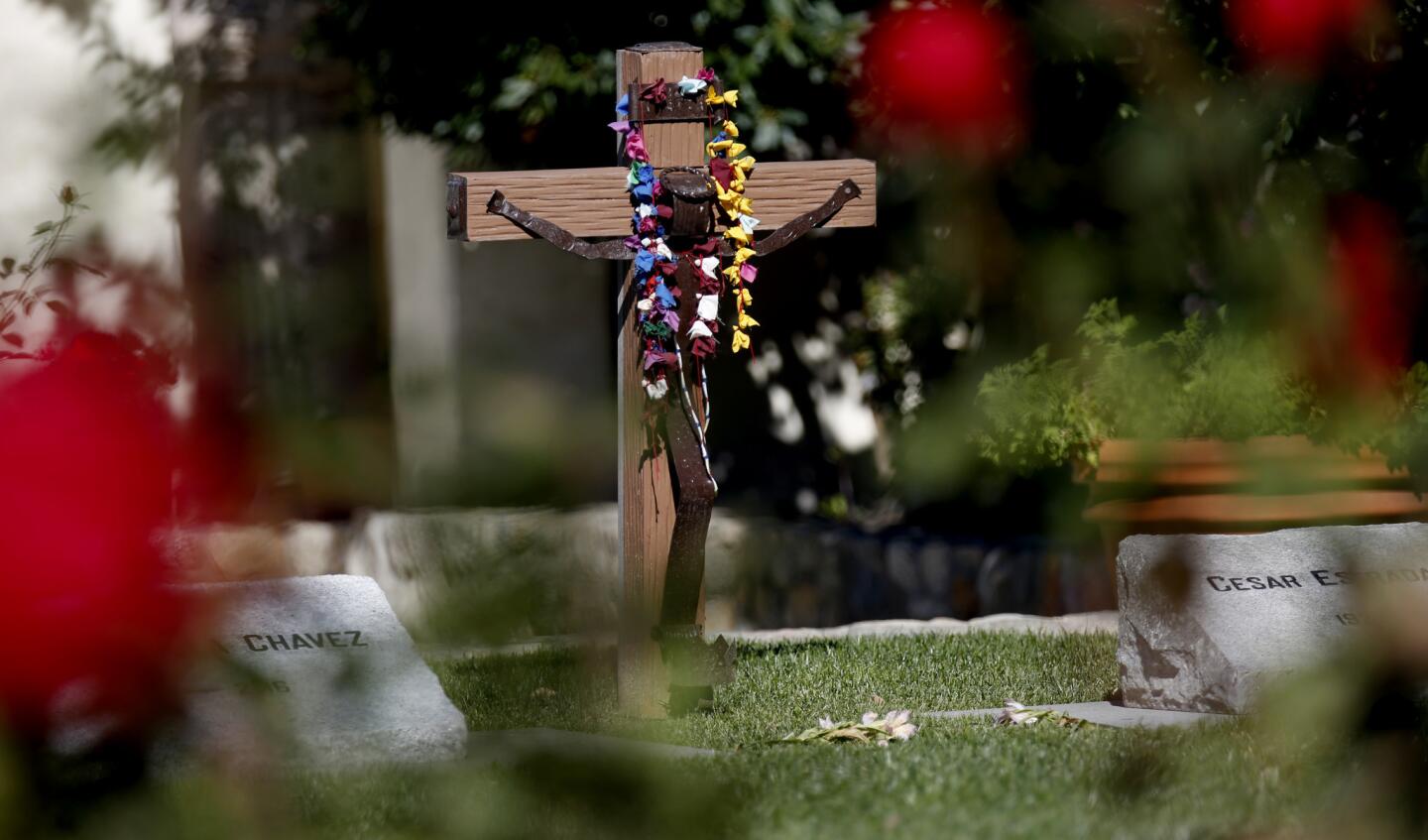
A cross between the graves of César Chávez, right, and his wife, Helen.
(Francine Orr / Los Angeles Times)Advertisement
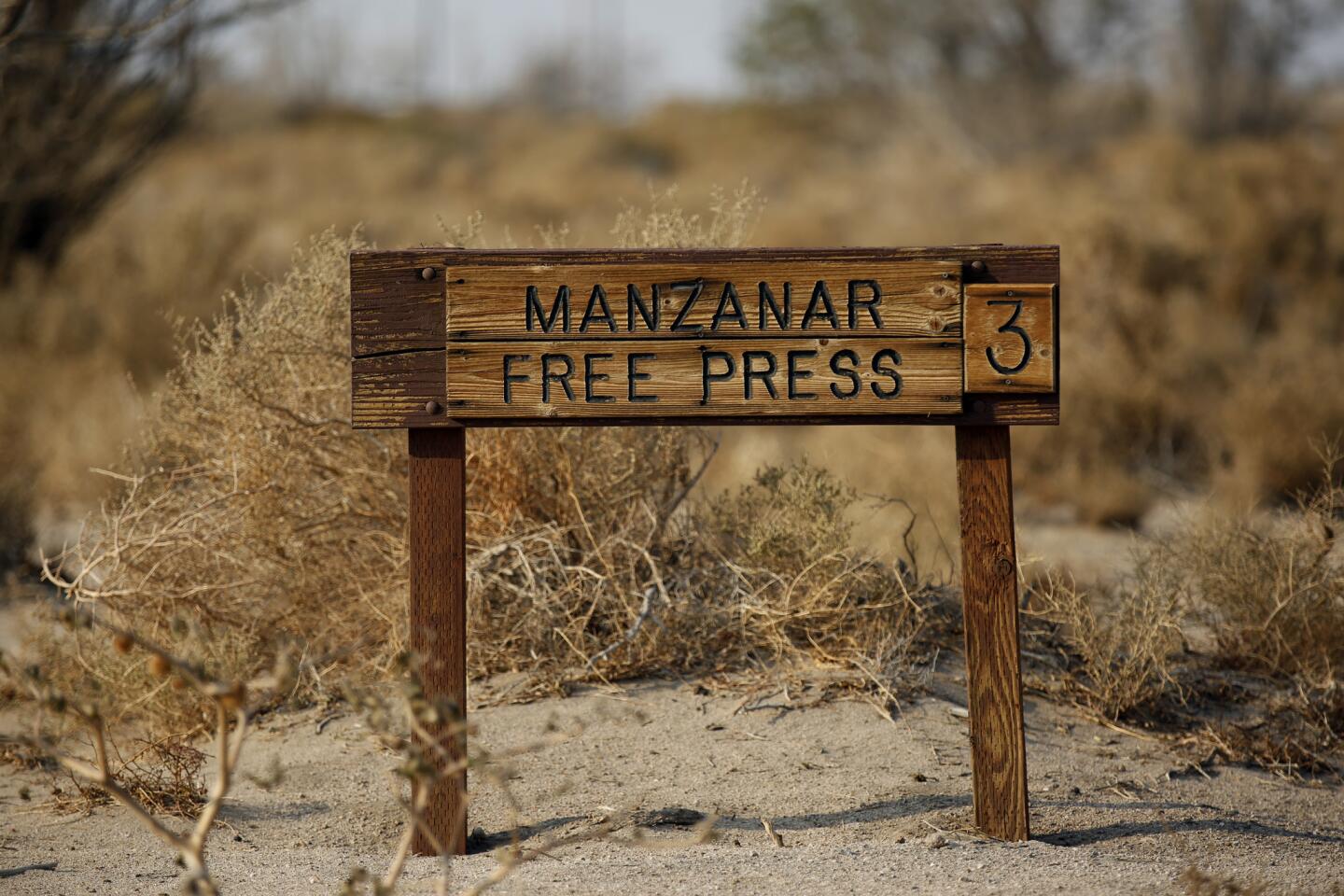
The Manzanar Free Press kept the internees informed at the Manzanar War Relocation Center.
(Francine Orr / Los Angeles Times)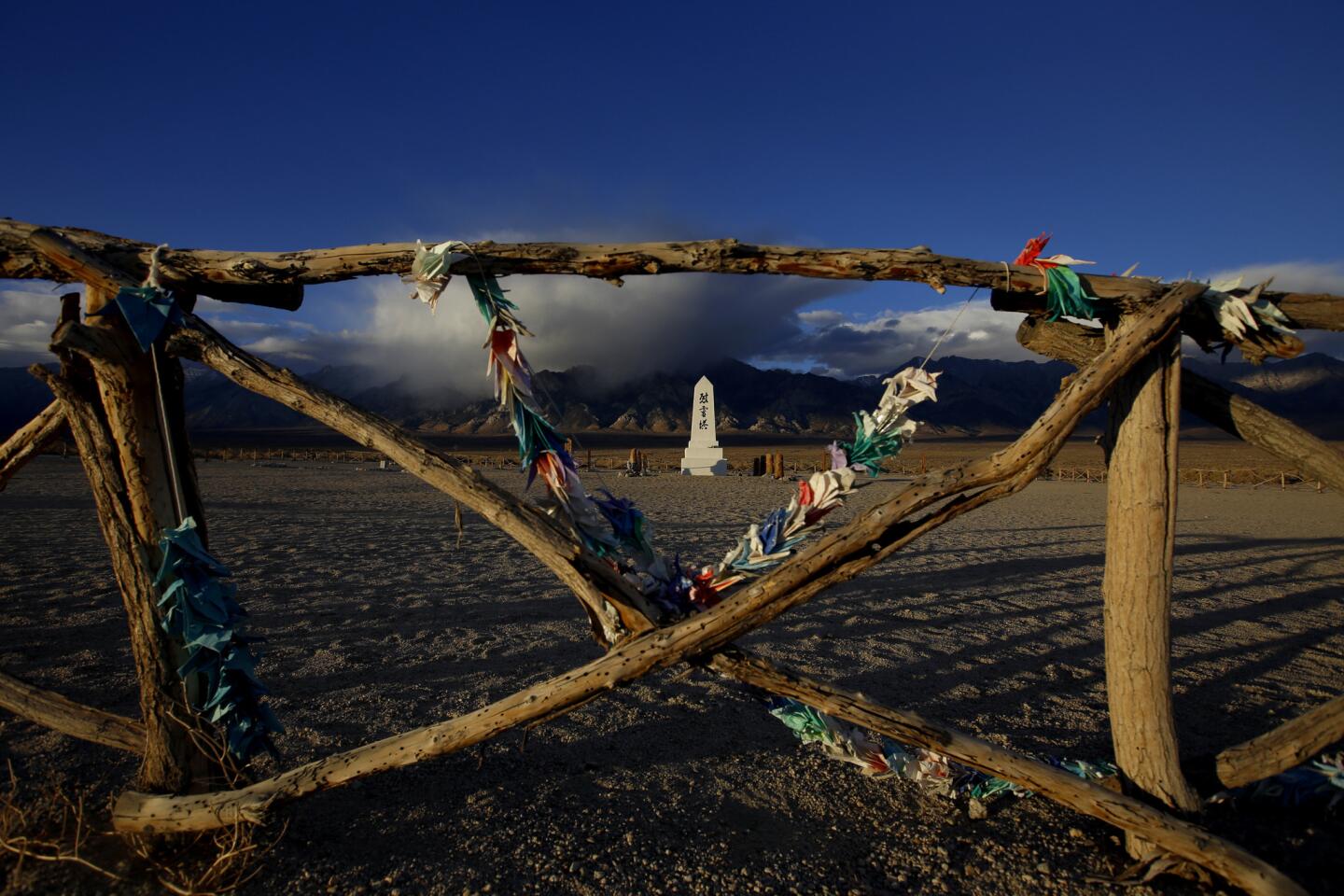
Origami cranes sway in the strong wind at Manzanar National Historic Site.
(Francine Orr / Los Angeles Times)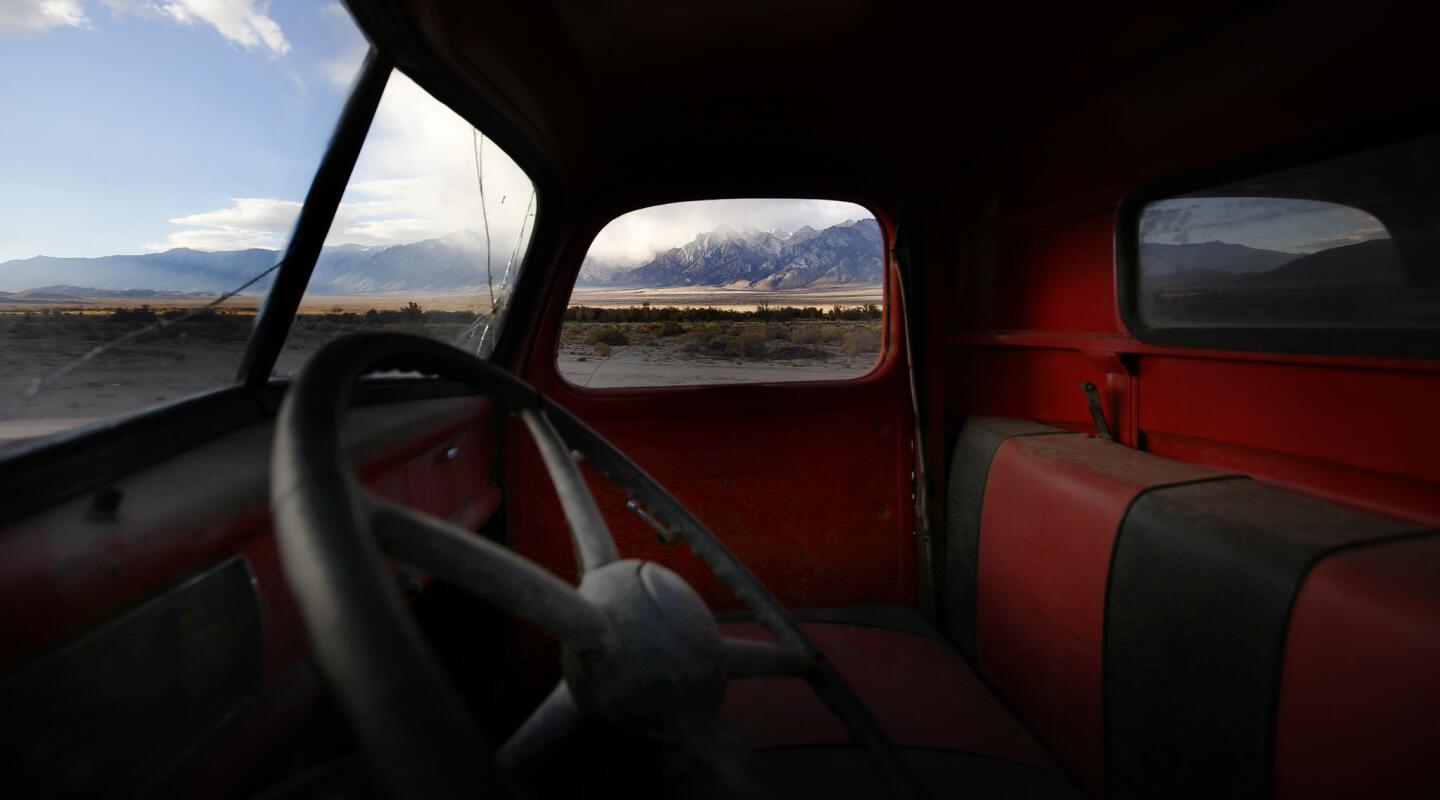
The interior of a truck is parked in front of one of the restored mess halls at the Manzanar War Relocation Center at Manzanar National Historic Site.
(Francine Orr / Los Angeles Times)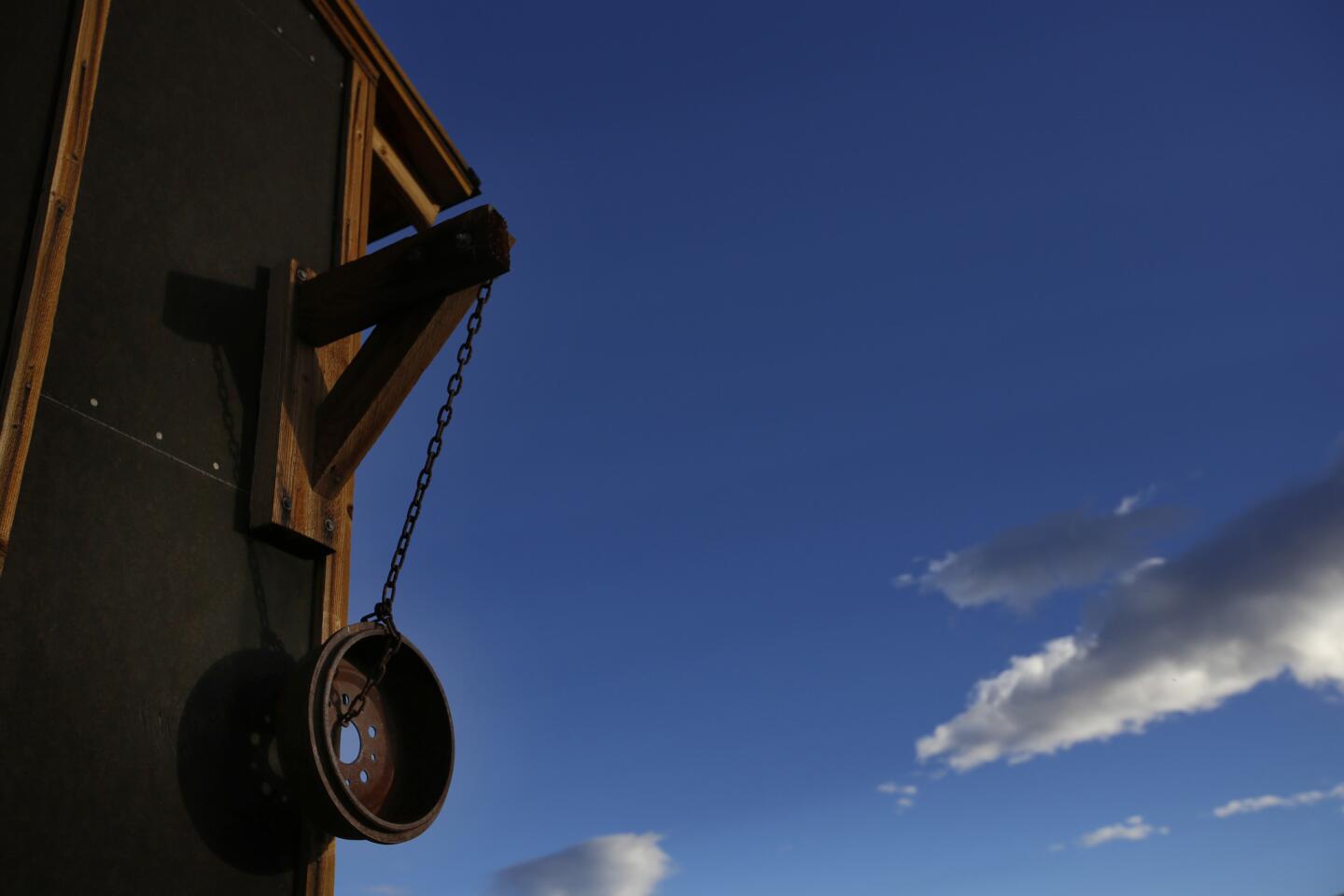
The exterior of one of the restored mess halls at the Manzanar War Relocation Center at Manzanar National Historic Site.
(Francine Orr / Los Angeles Times)Advertisement
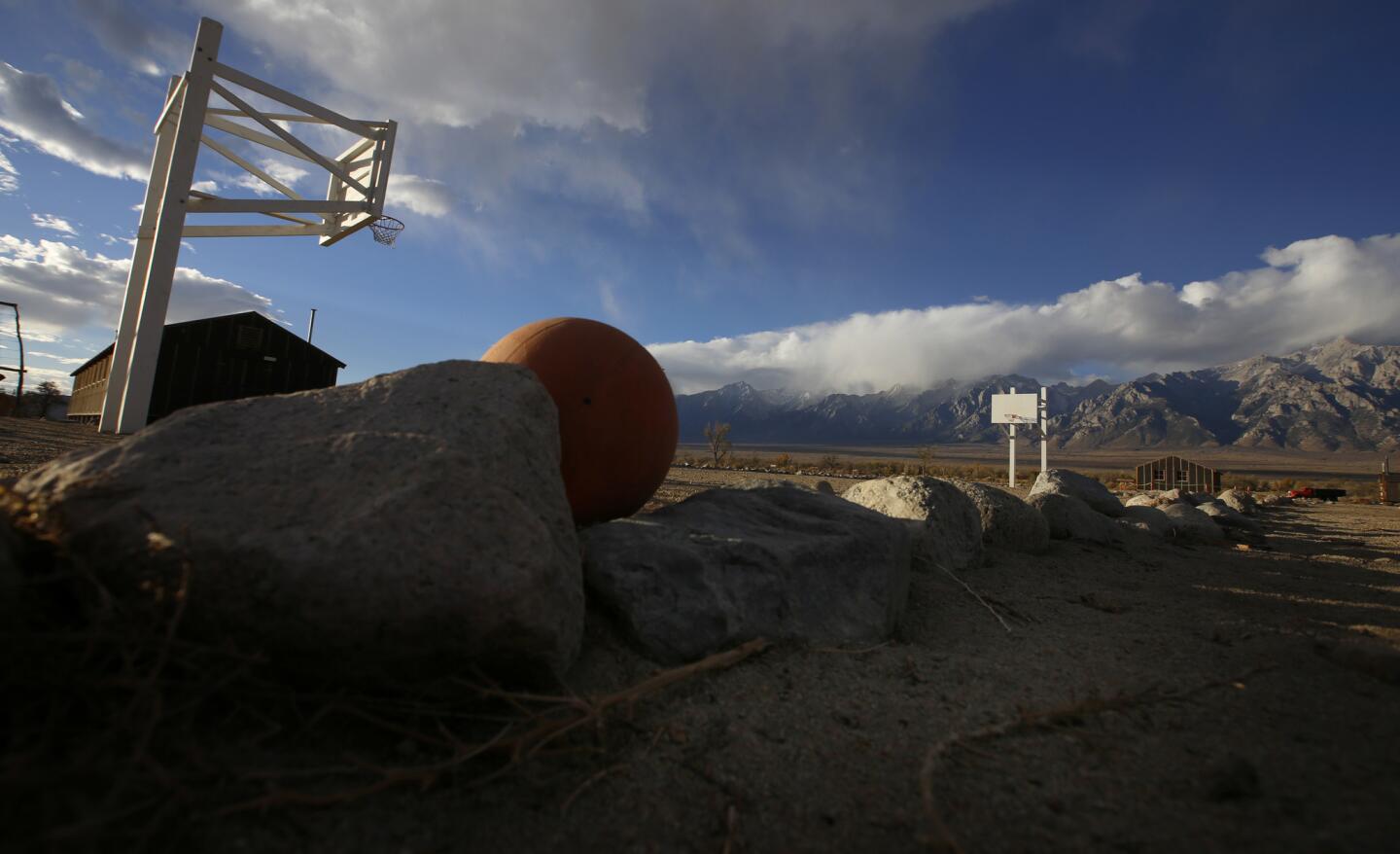
A basketball court at the Manzanar War Relocation Center at Manzanar National Historic Site.
(Francine Orr / Los Angeles Times)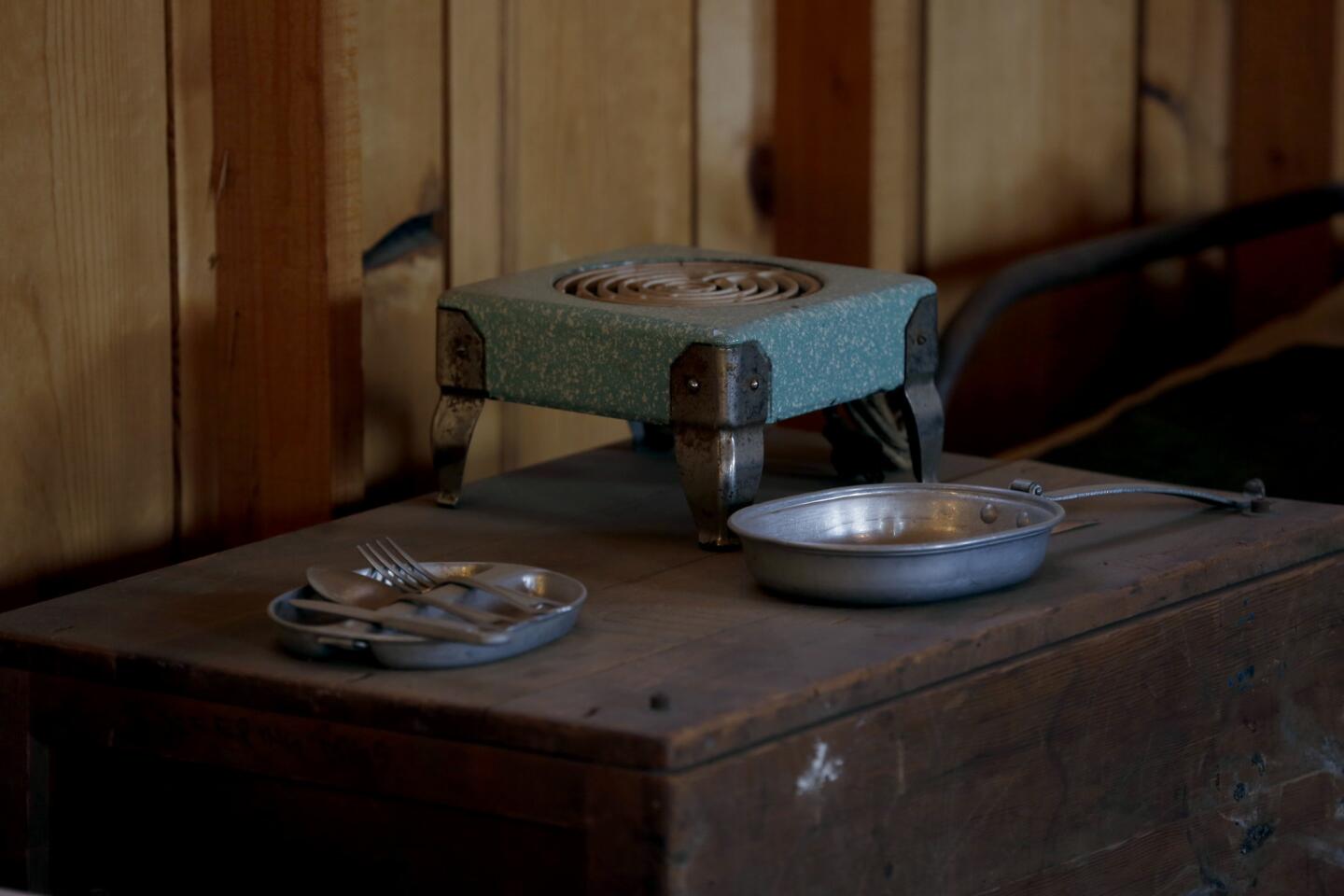
An exhibit of articles including a hot plate inside of a replica internment camp barracks at Manzanar National Historic Site.
(Francine Orr / Los Angeles Times)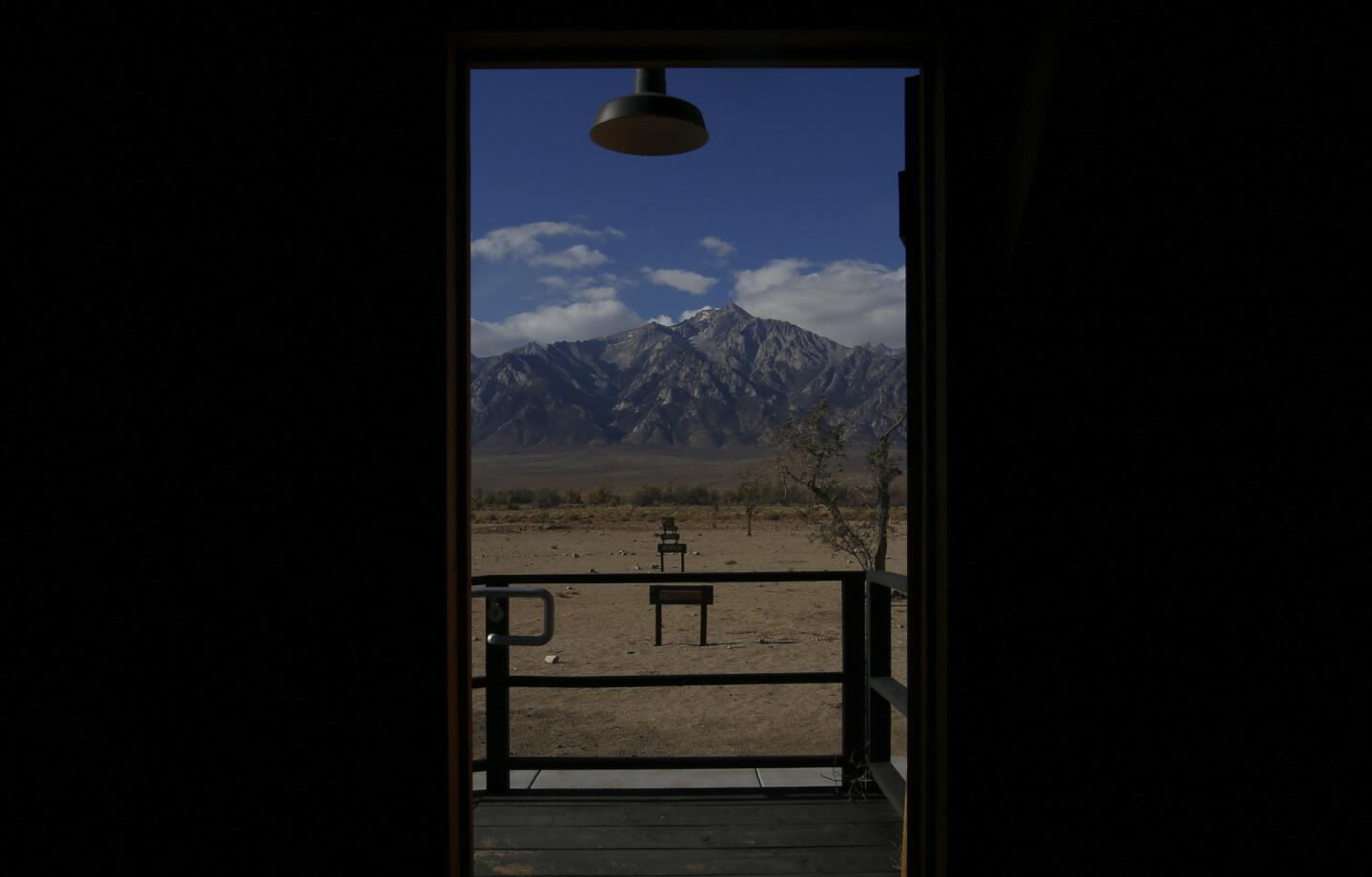
A view through the doorway of a replica barracks at Manzanar National Historic Site.
(Francine Orr / Los Angeles Times)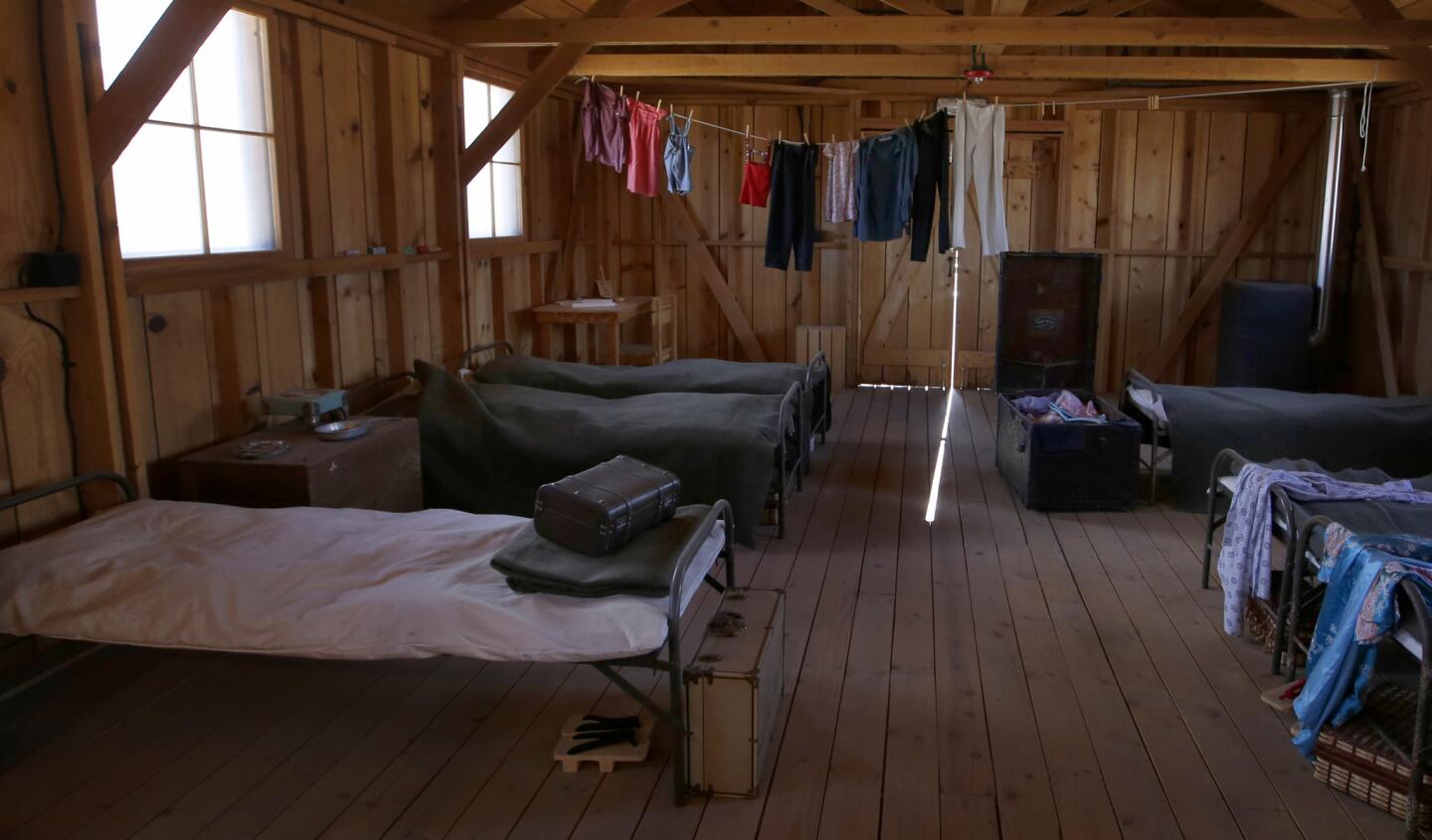
An exhibit of articles inside a replica barracks at Manzanar National Historic Site.
(Francine Orr / Los Angeles Times)Advertisement
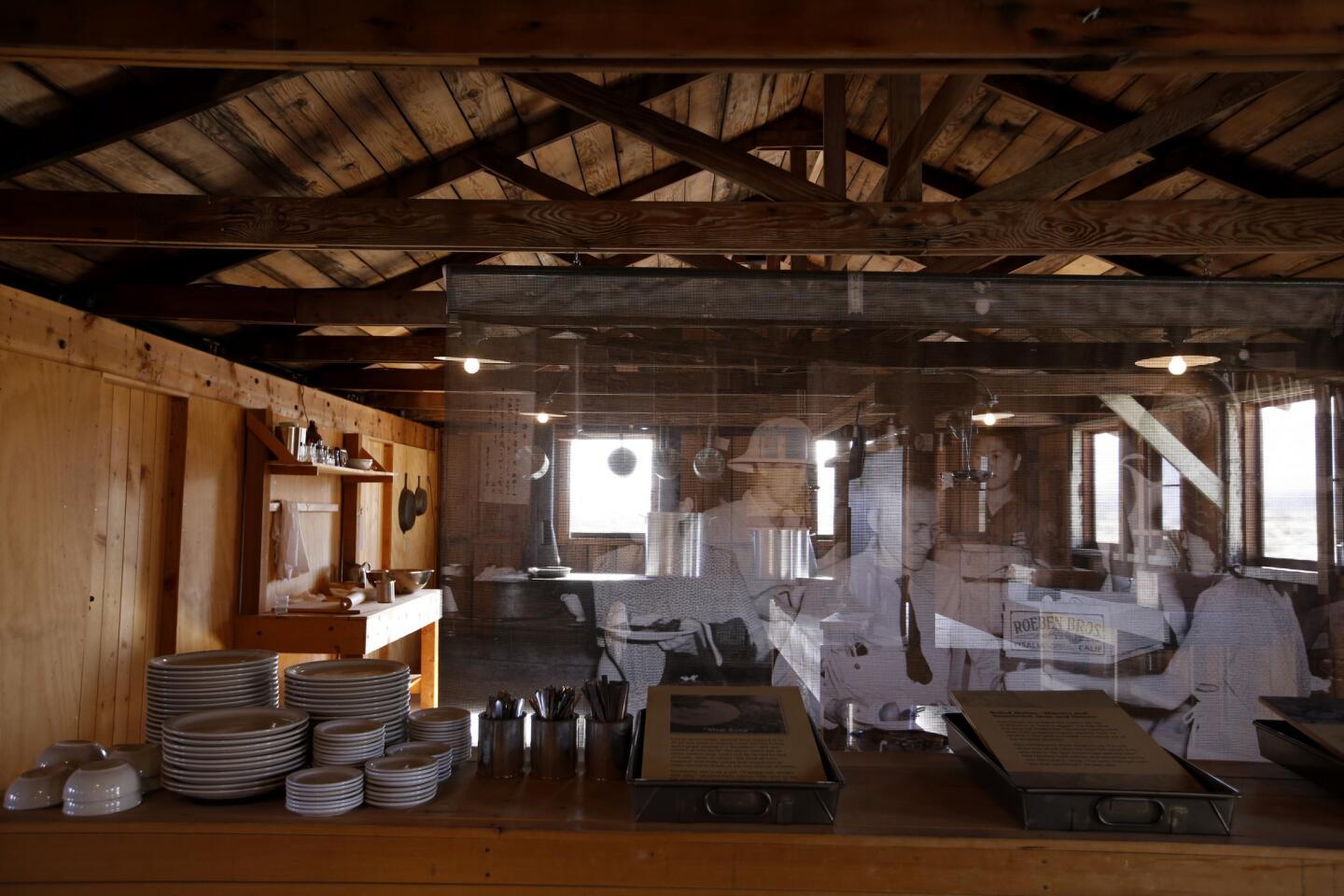
An exhibit of articles inside a replica of the Manzanar War Relocation Center mess hall at Manzanar National Historic Site.
(Francine Orr / Los Angeles Times)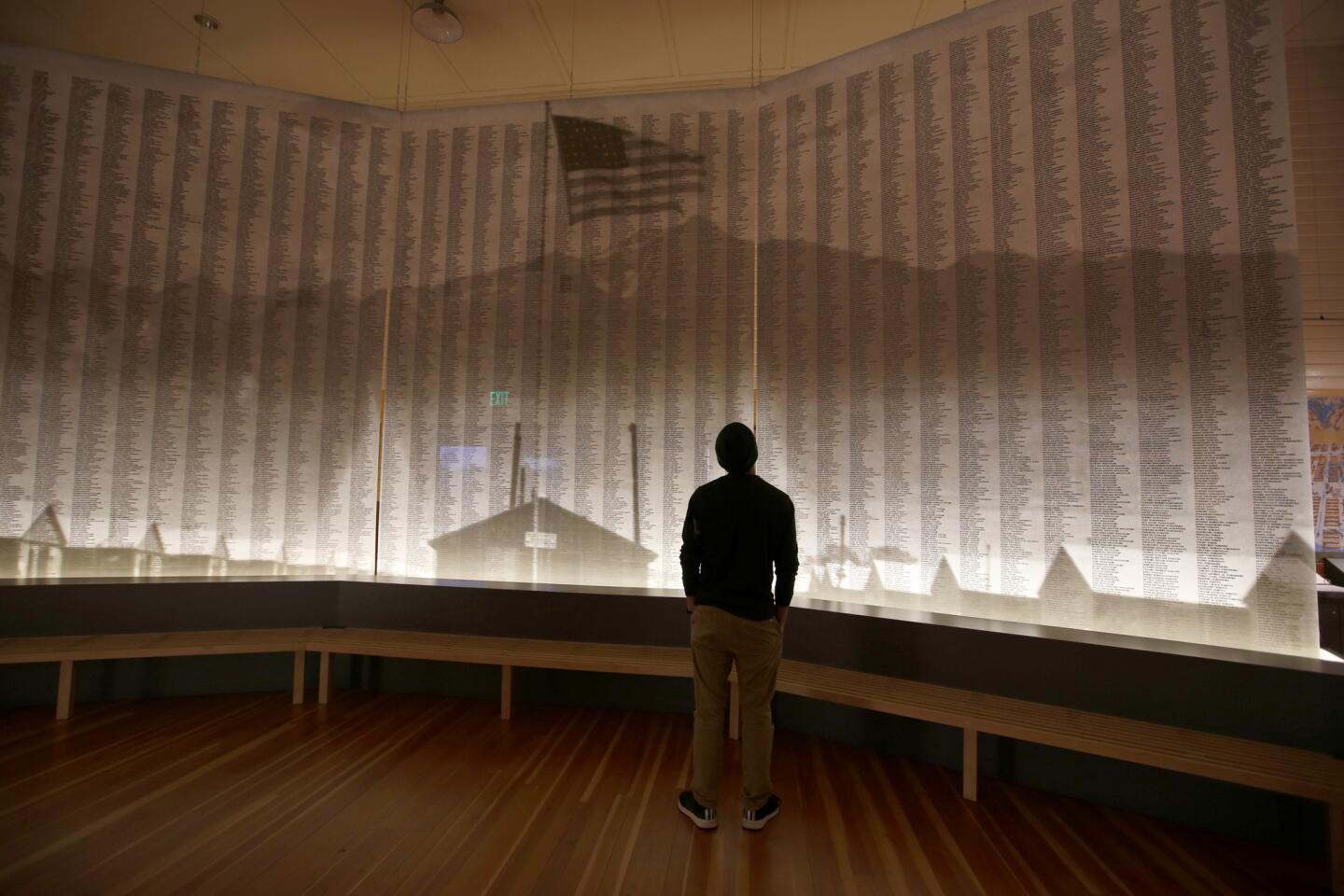
A guest views a list of names of interned Americans on display at Manzanar National Historic Site.
(Francine Orr / Los Angeles Times)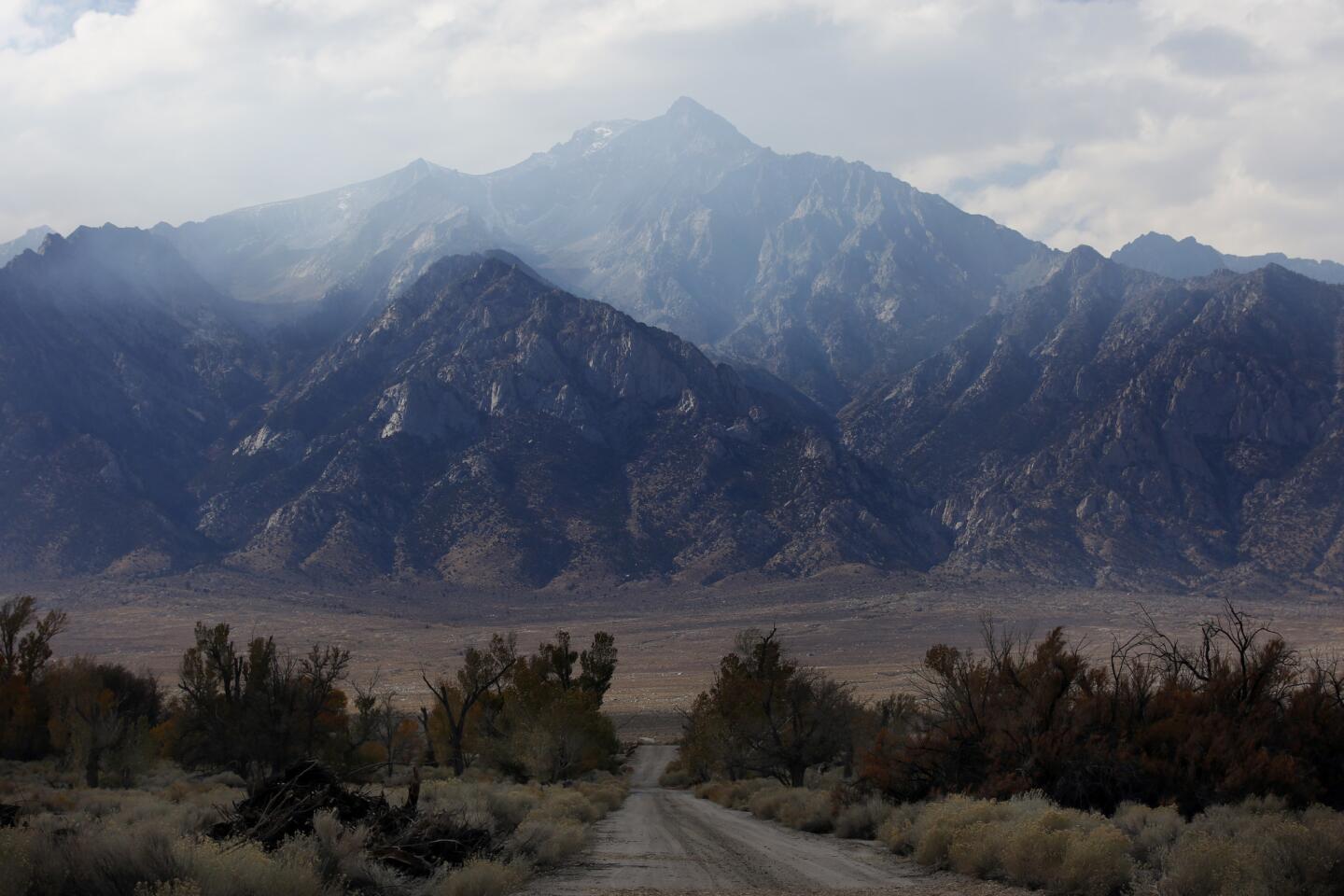
A view of Manzanar National Historic Site.
(Francine Orr / Los Angeles Times)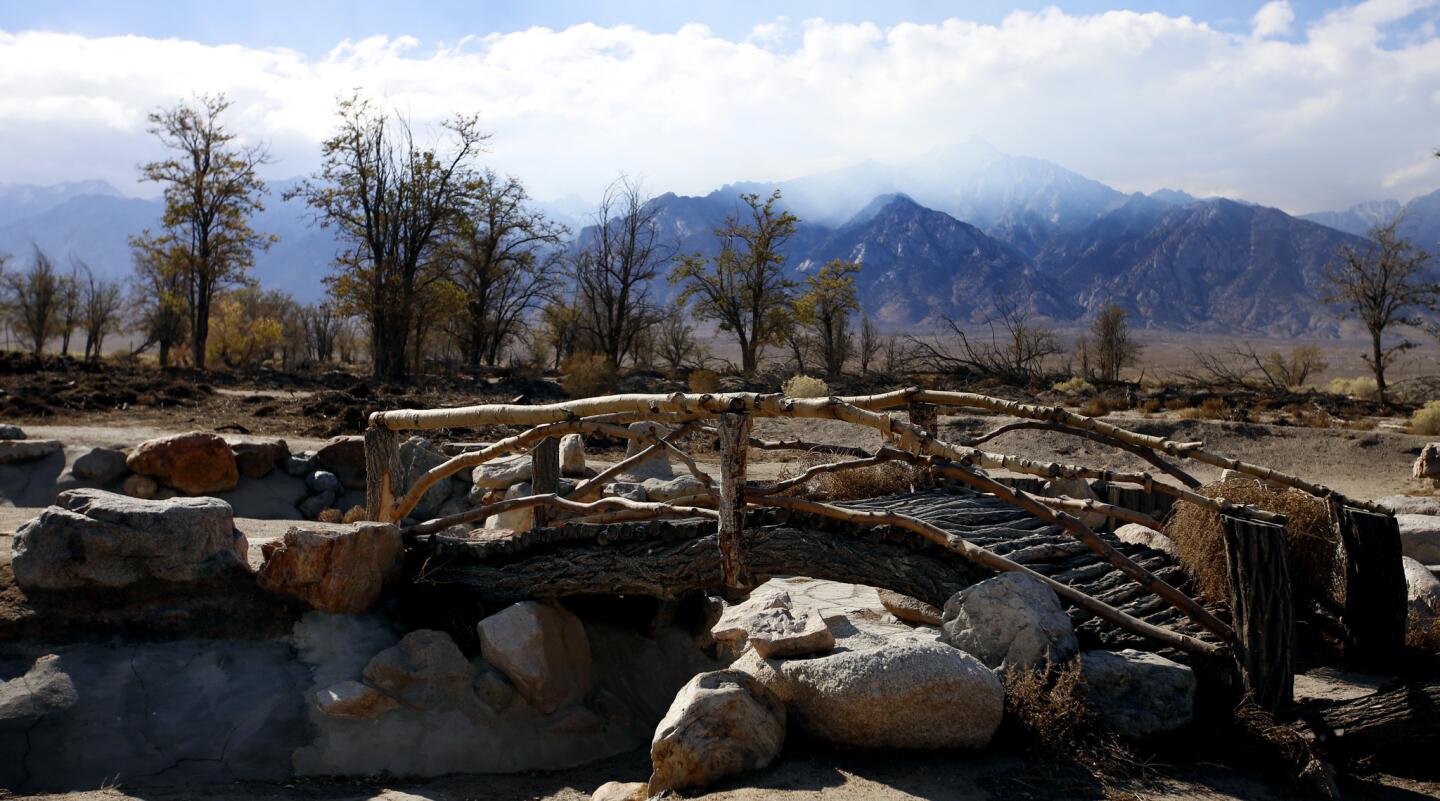
A wooden bridge in a garden at Manzanar National Historic Site.
(Francine Orr / Los Angeles Times)


